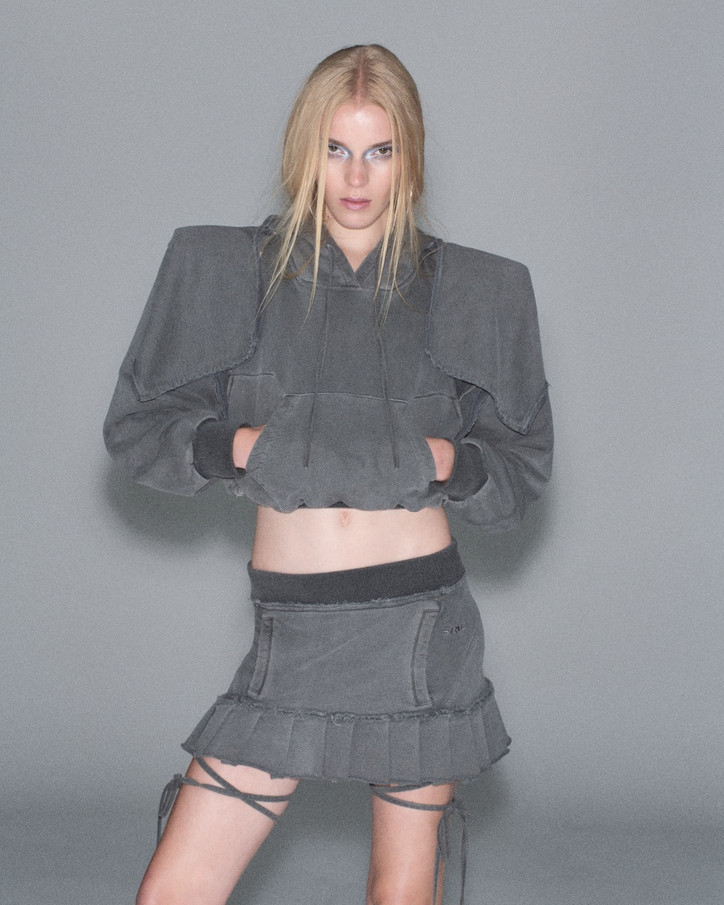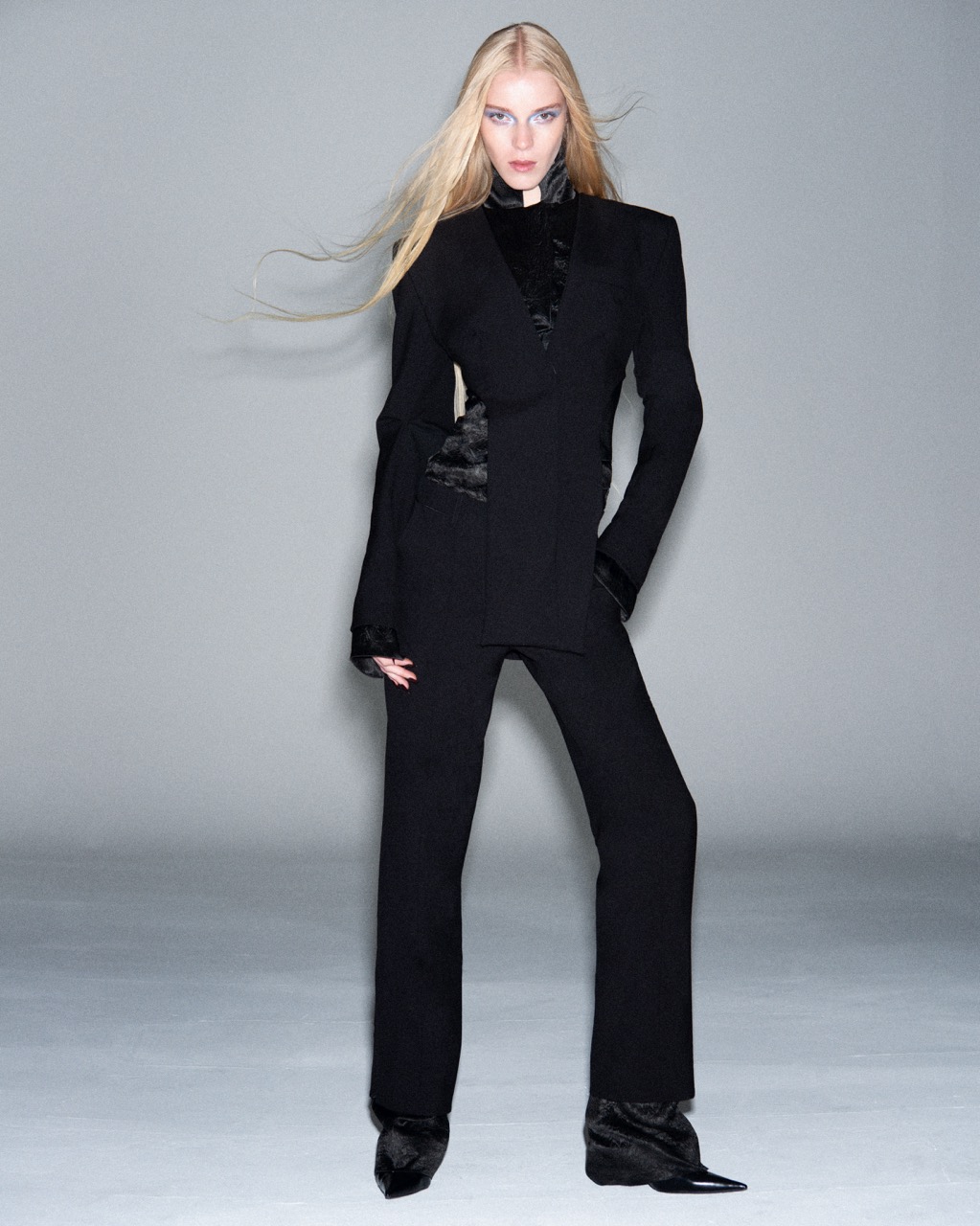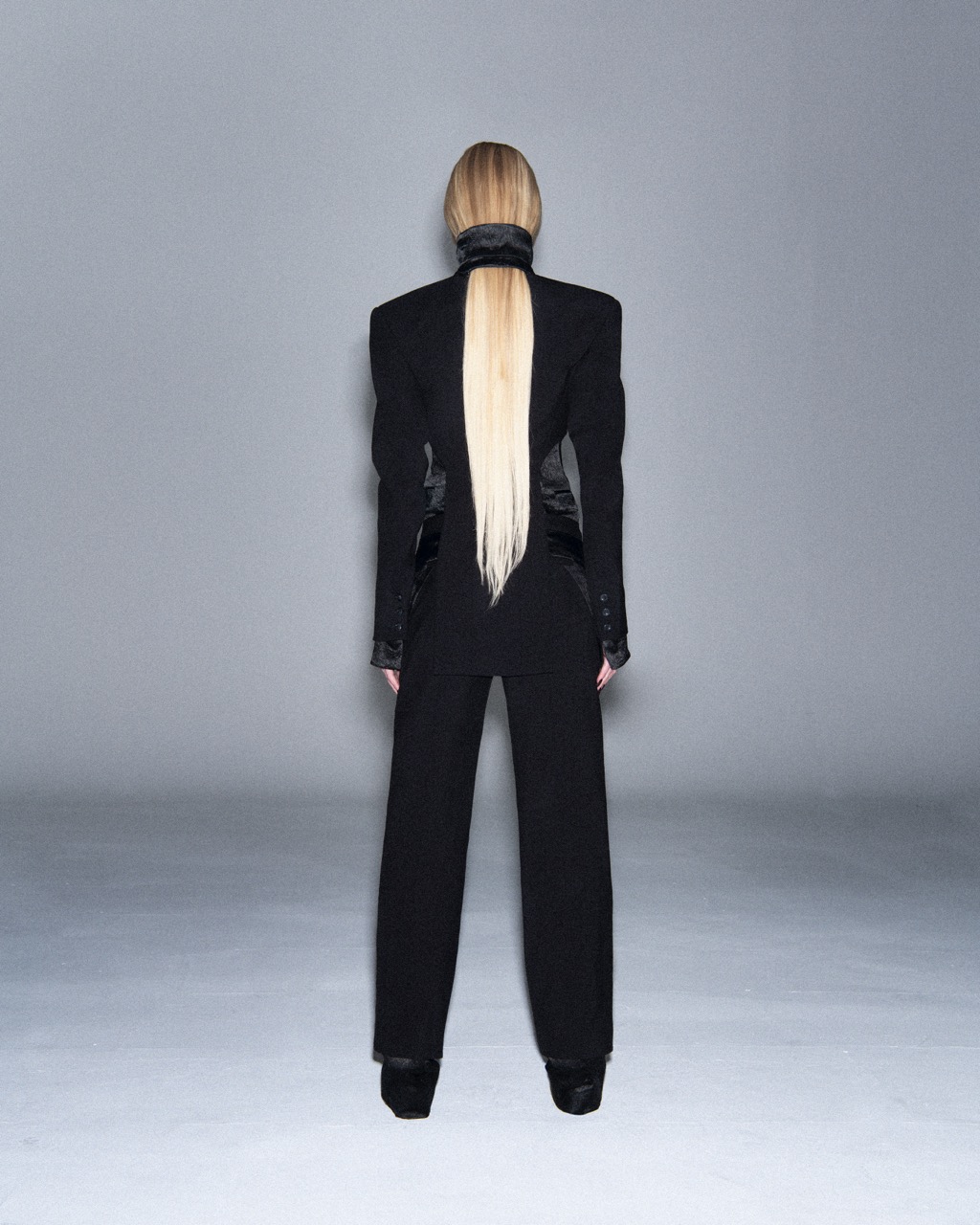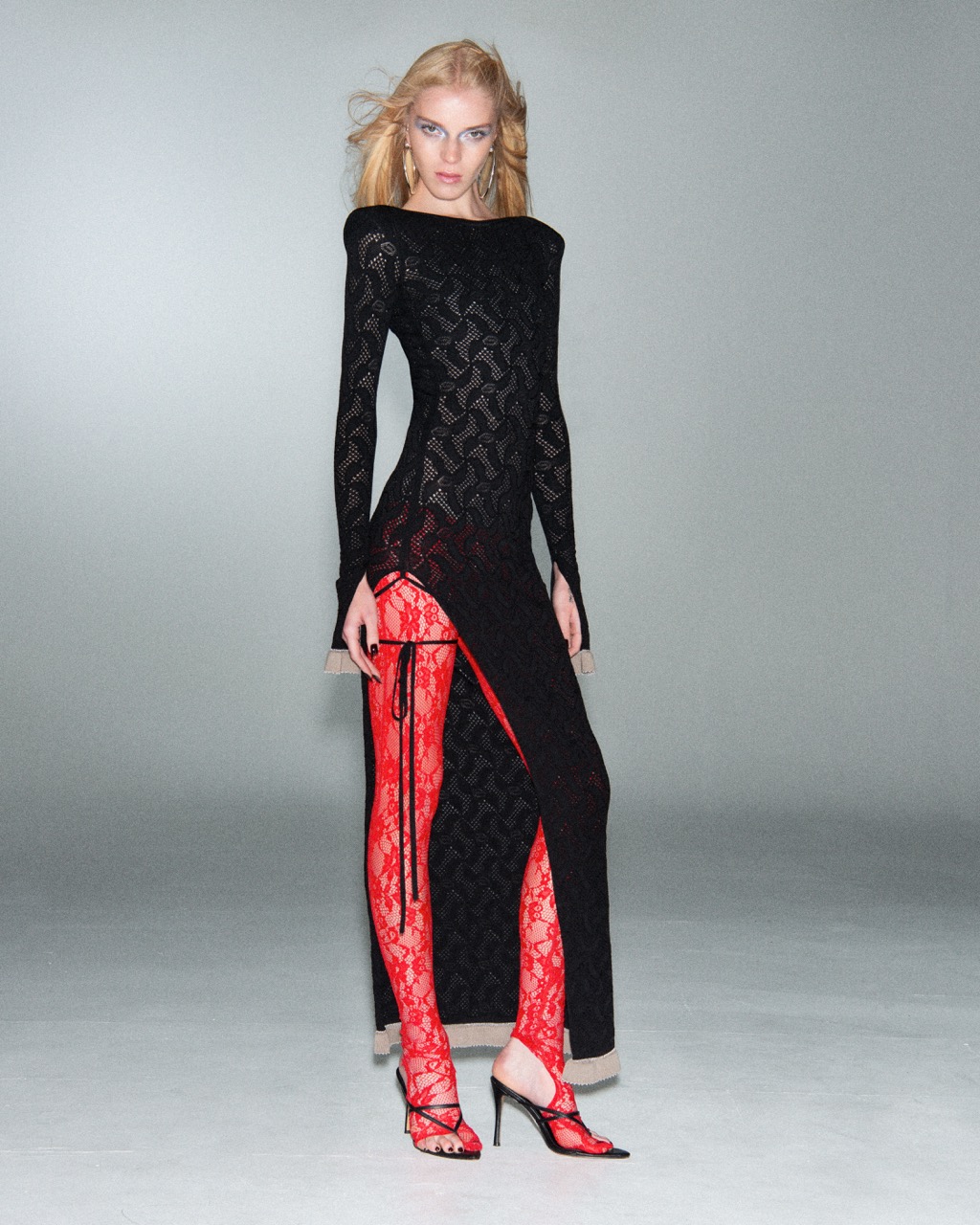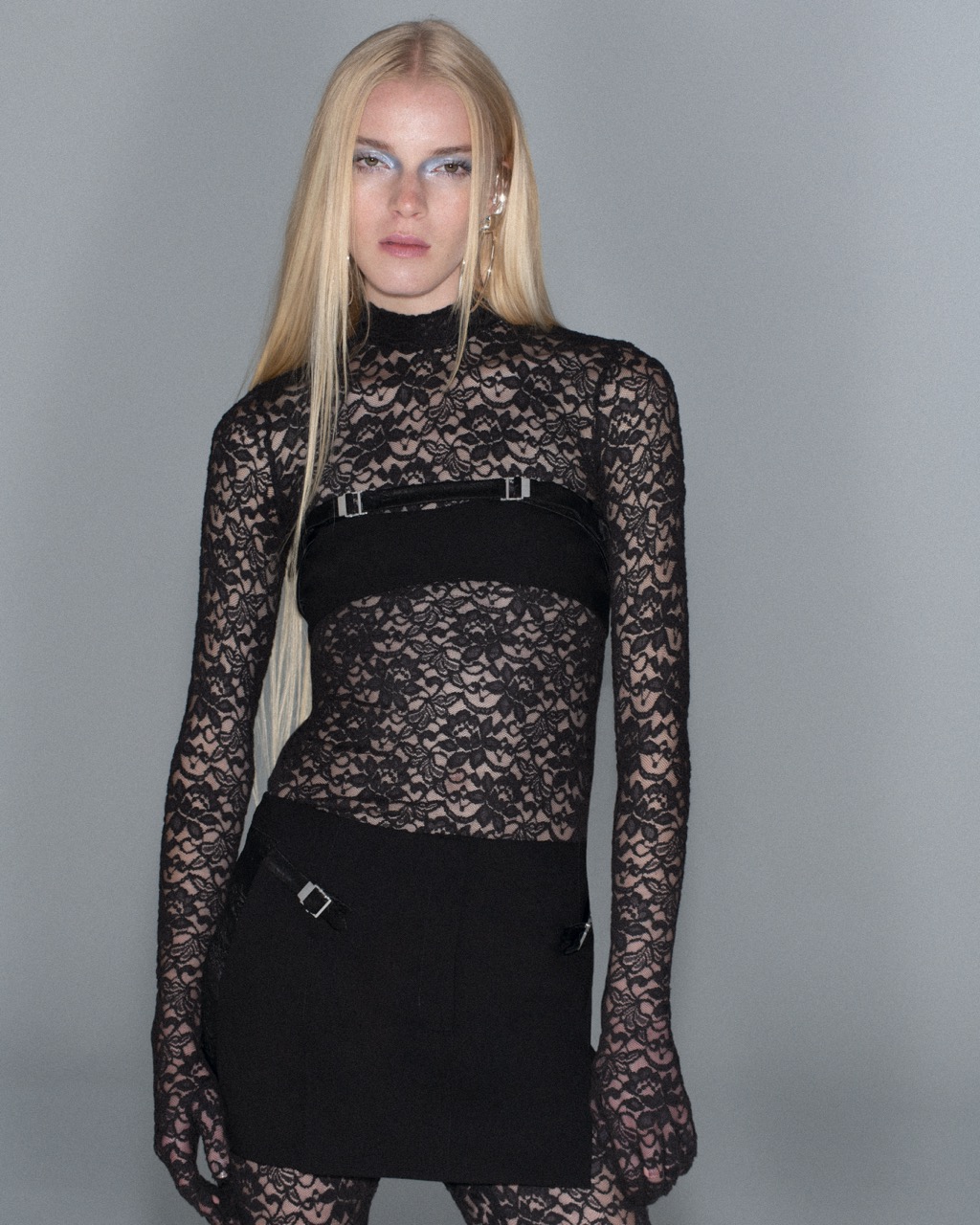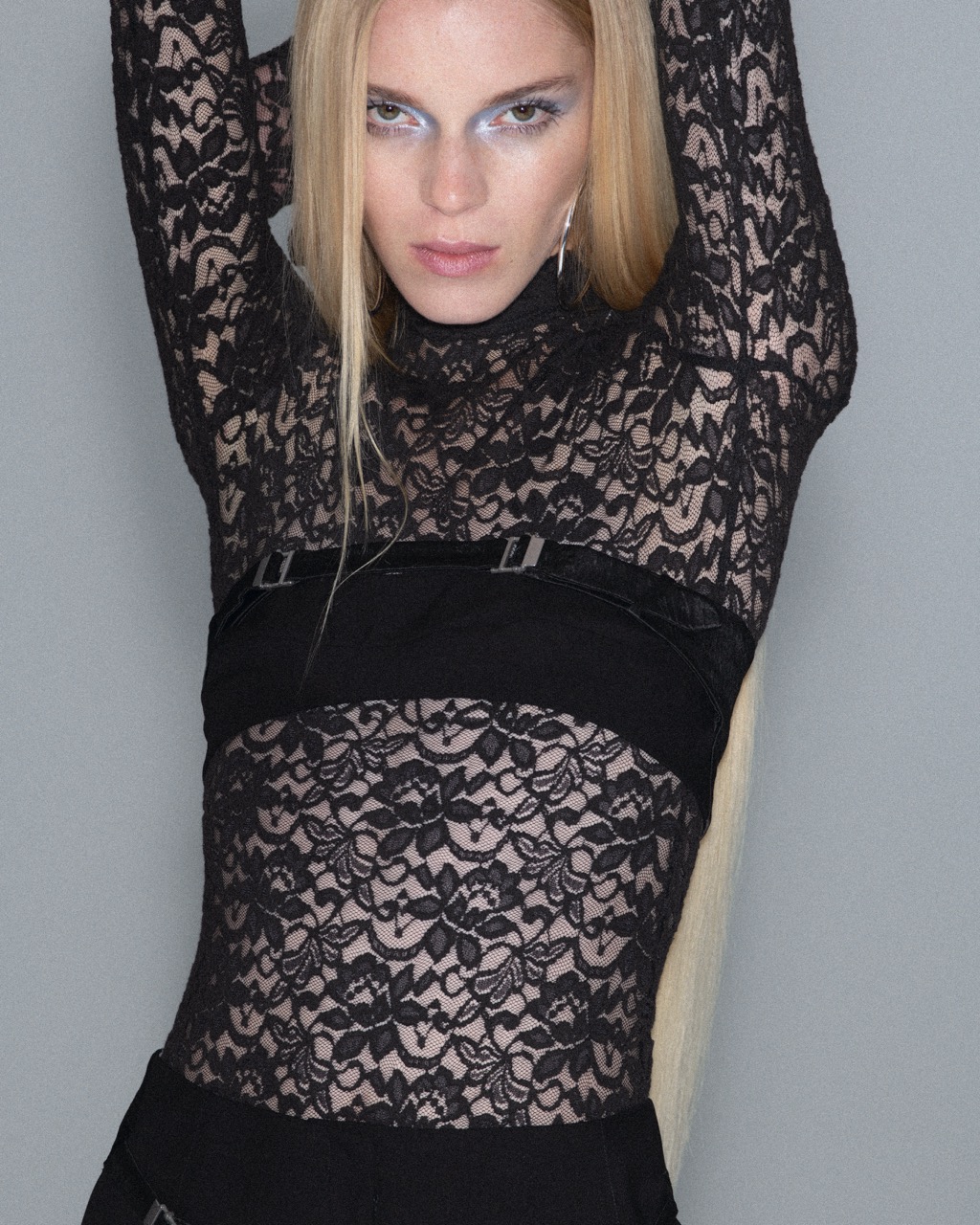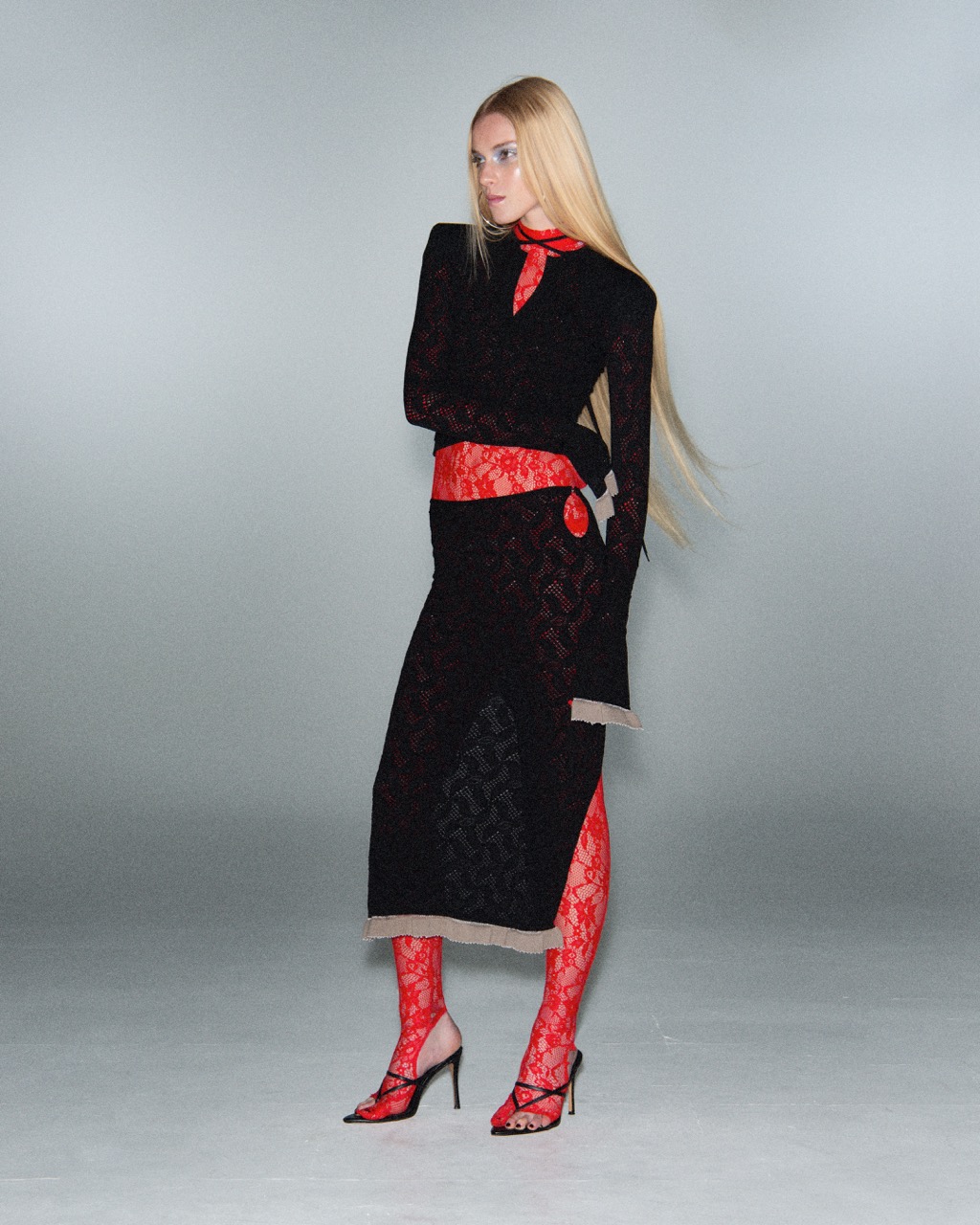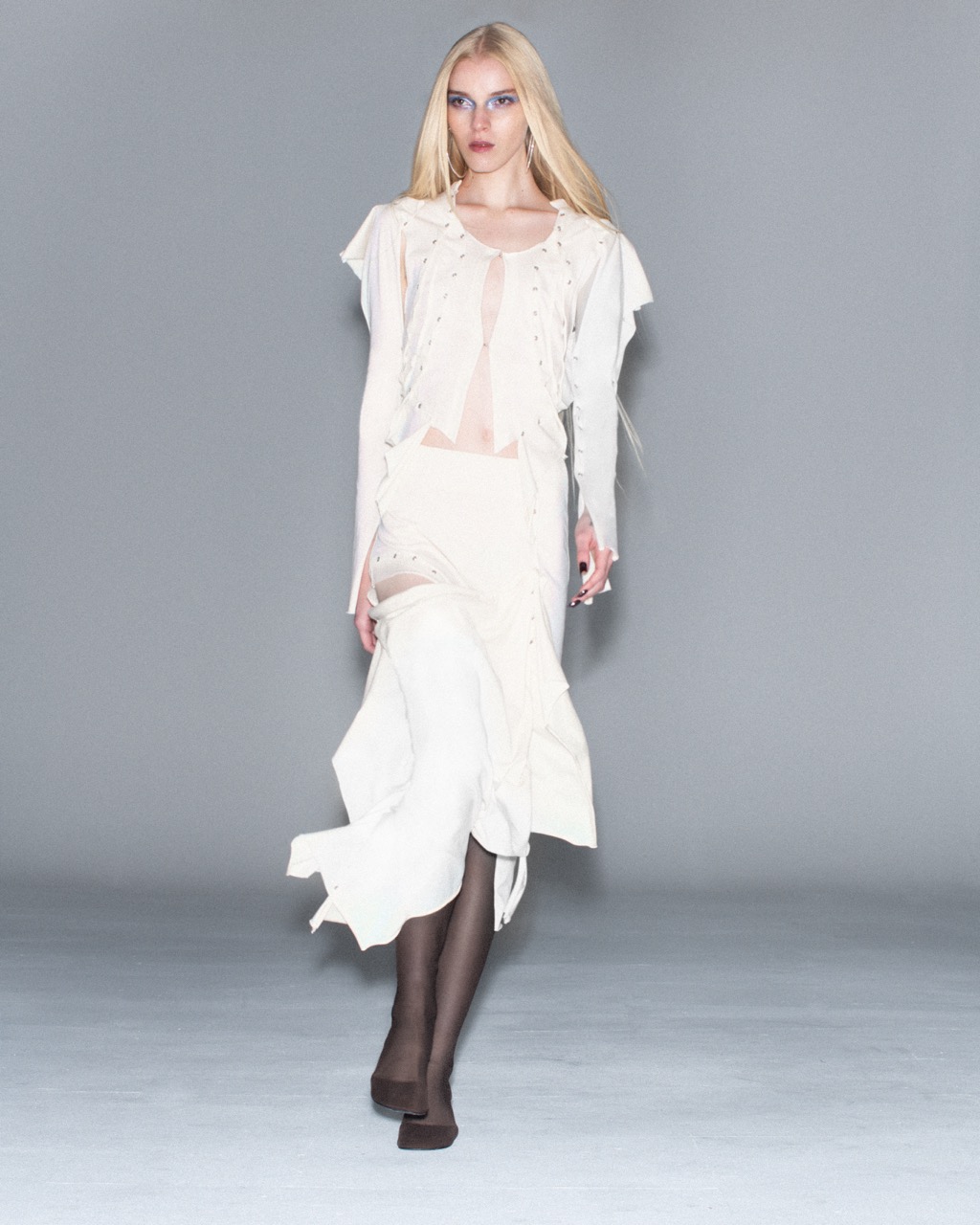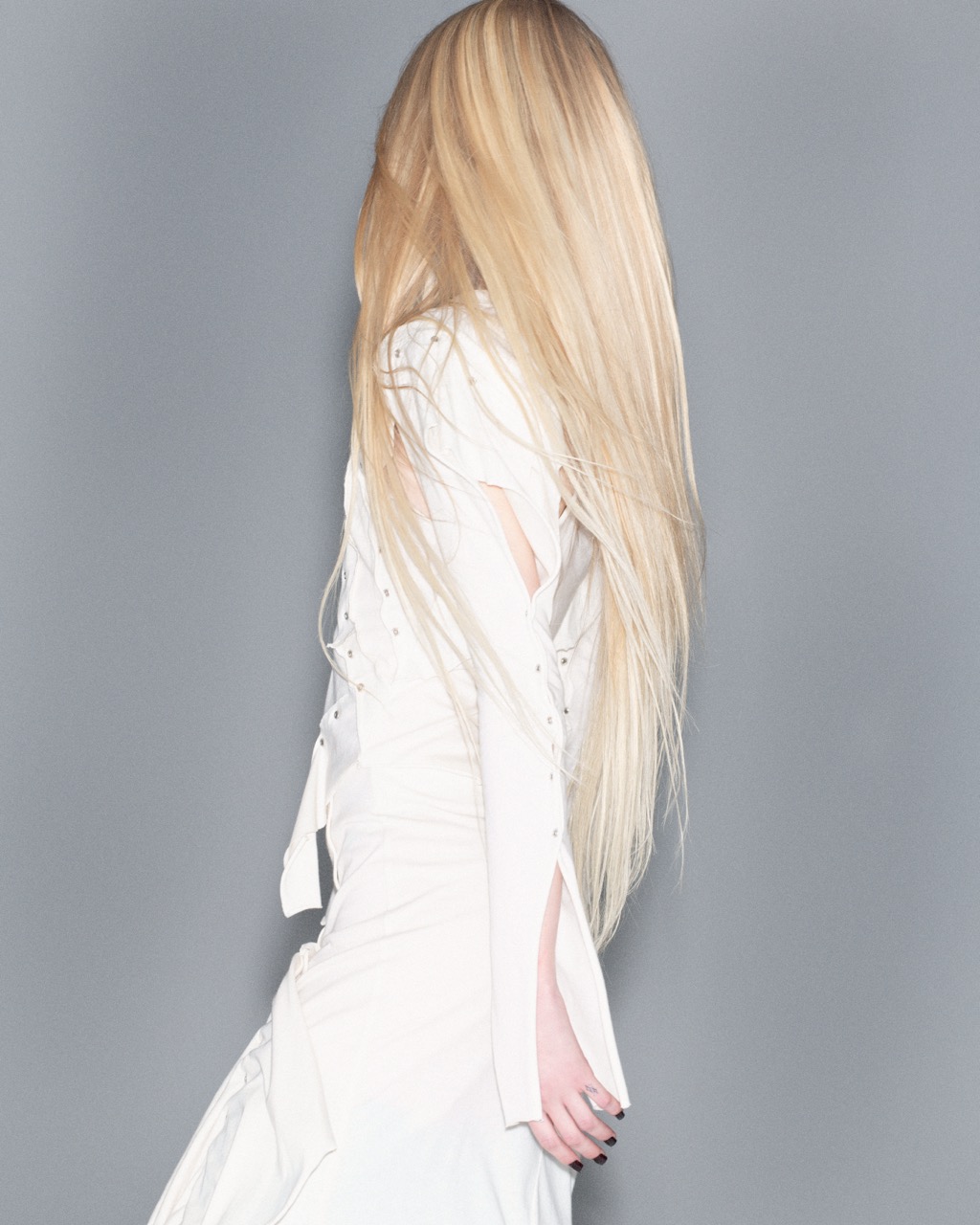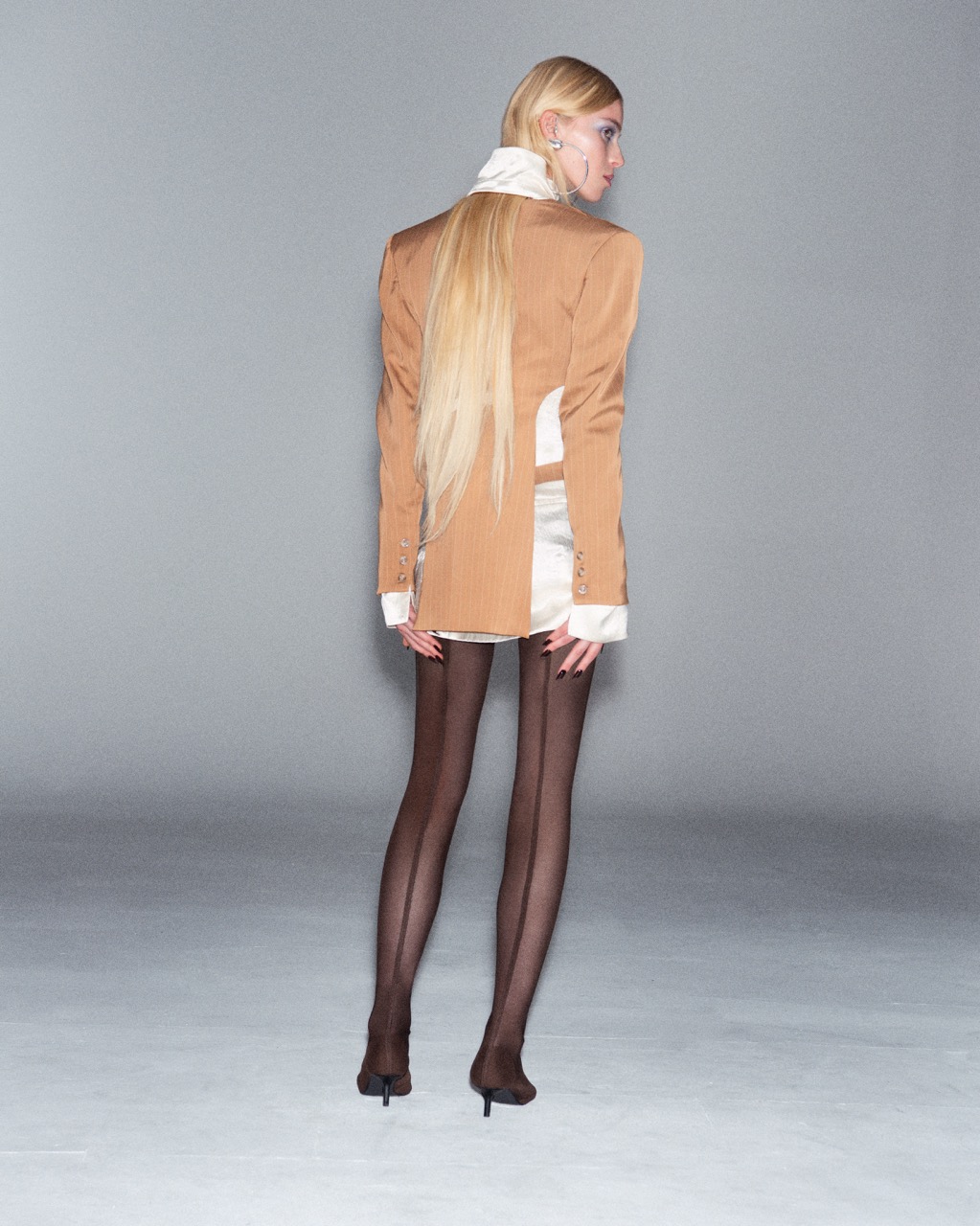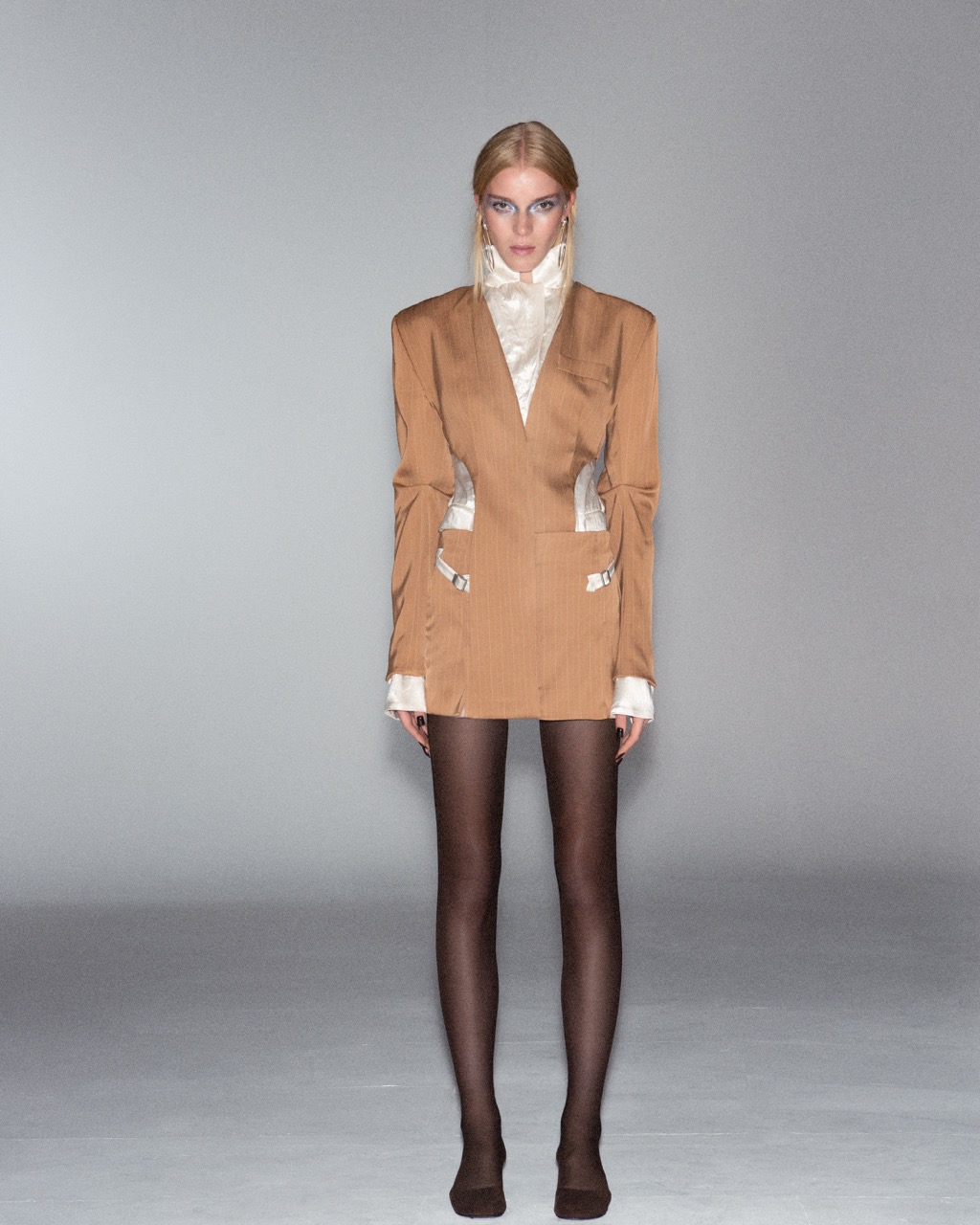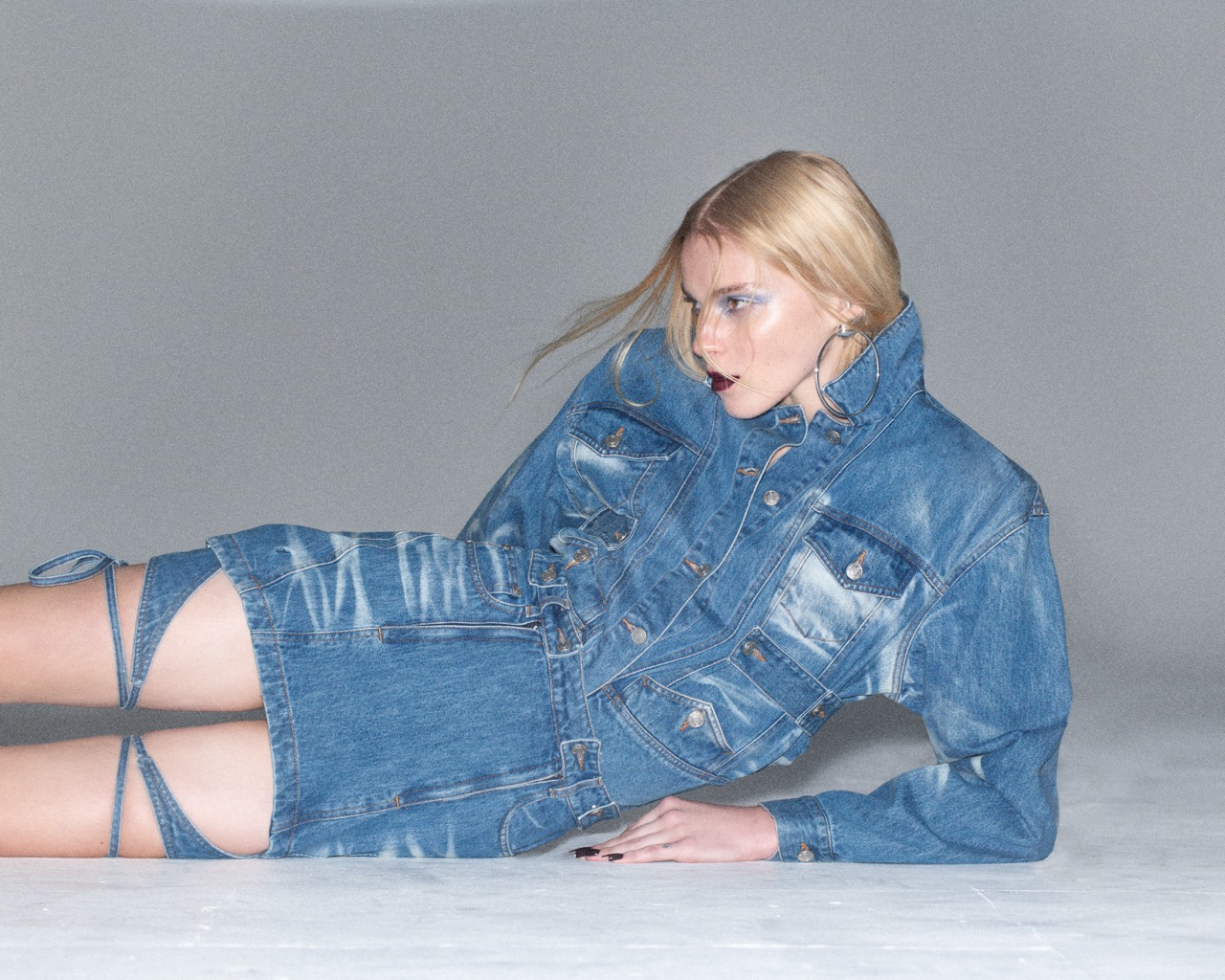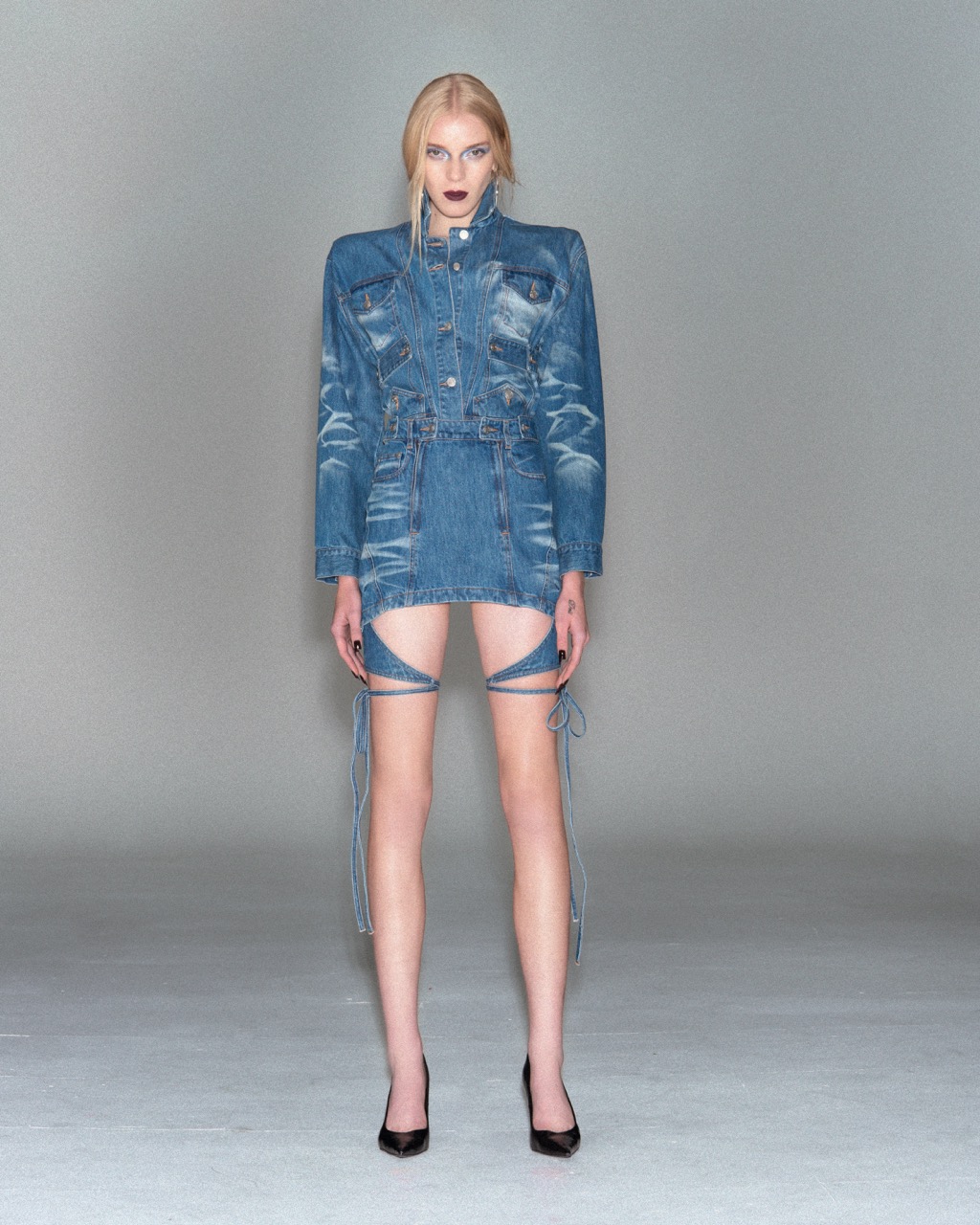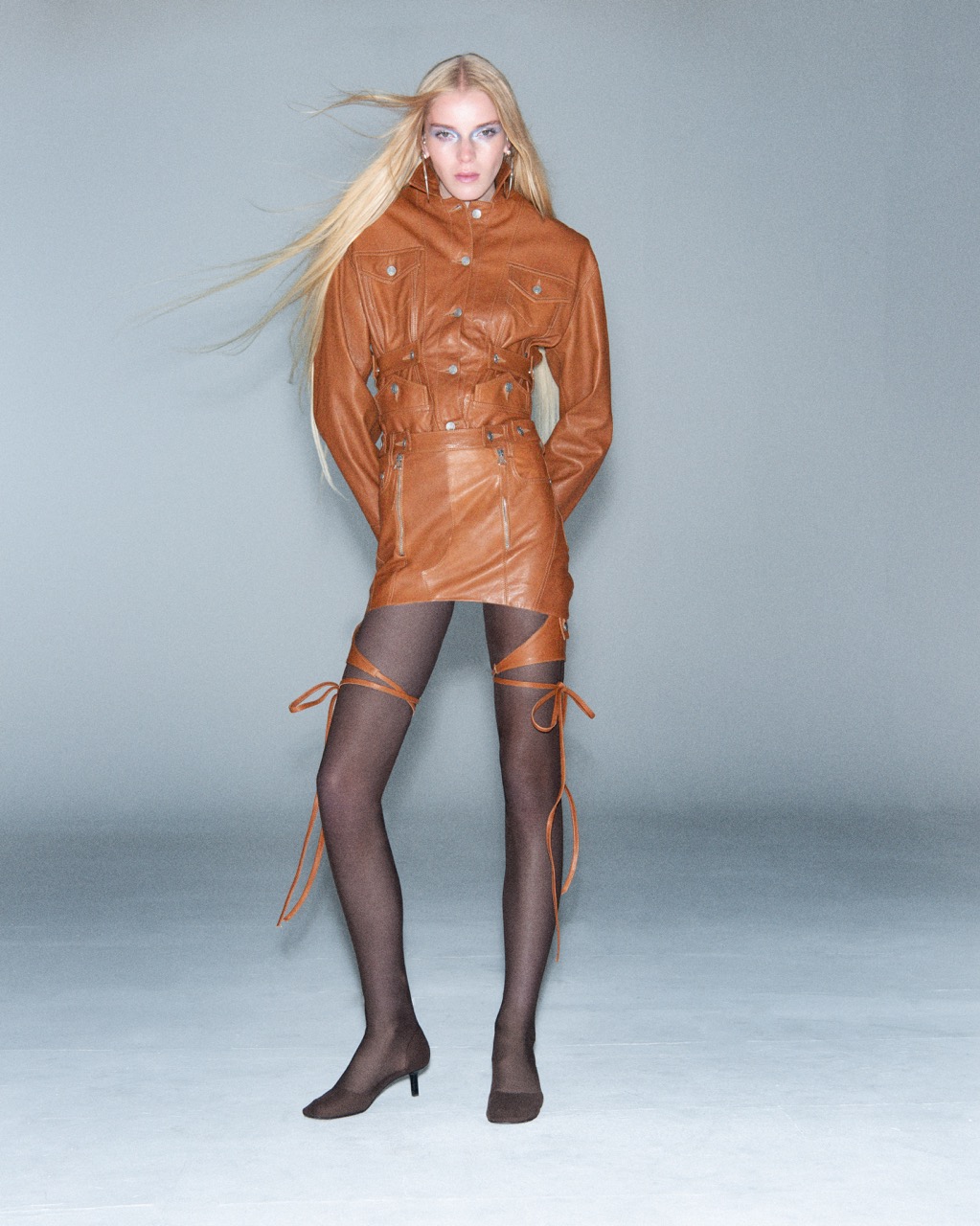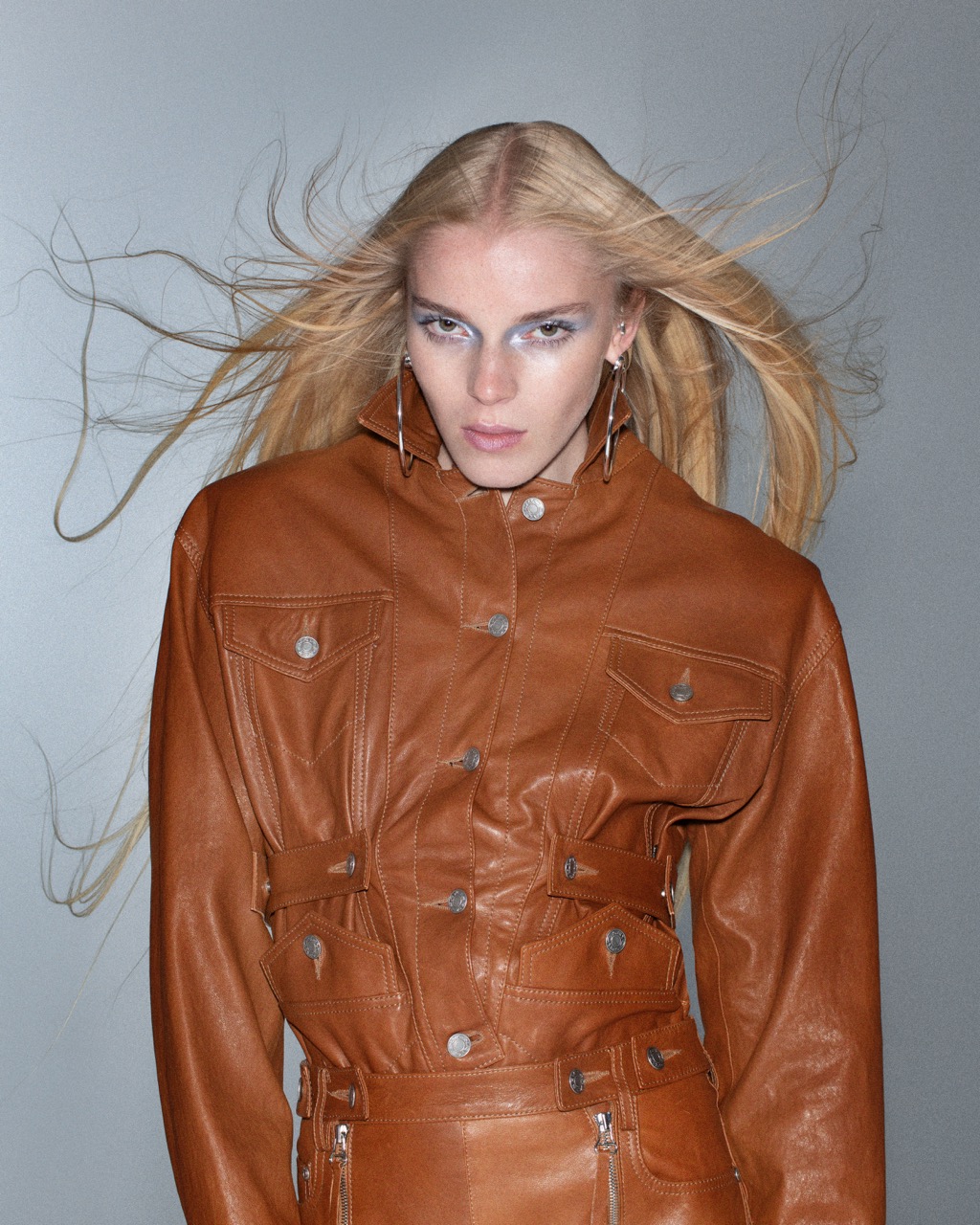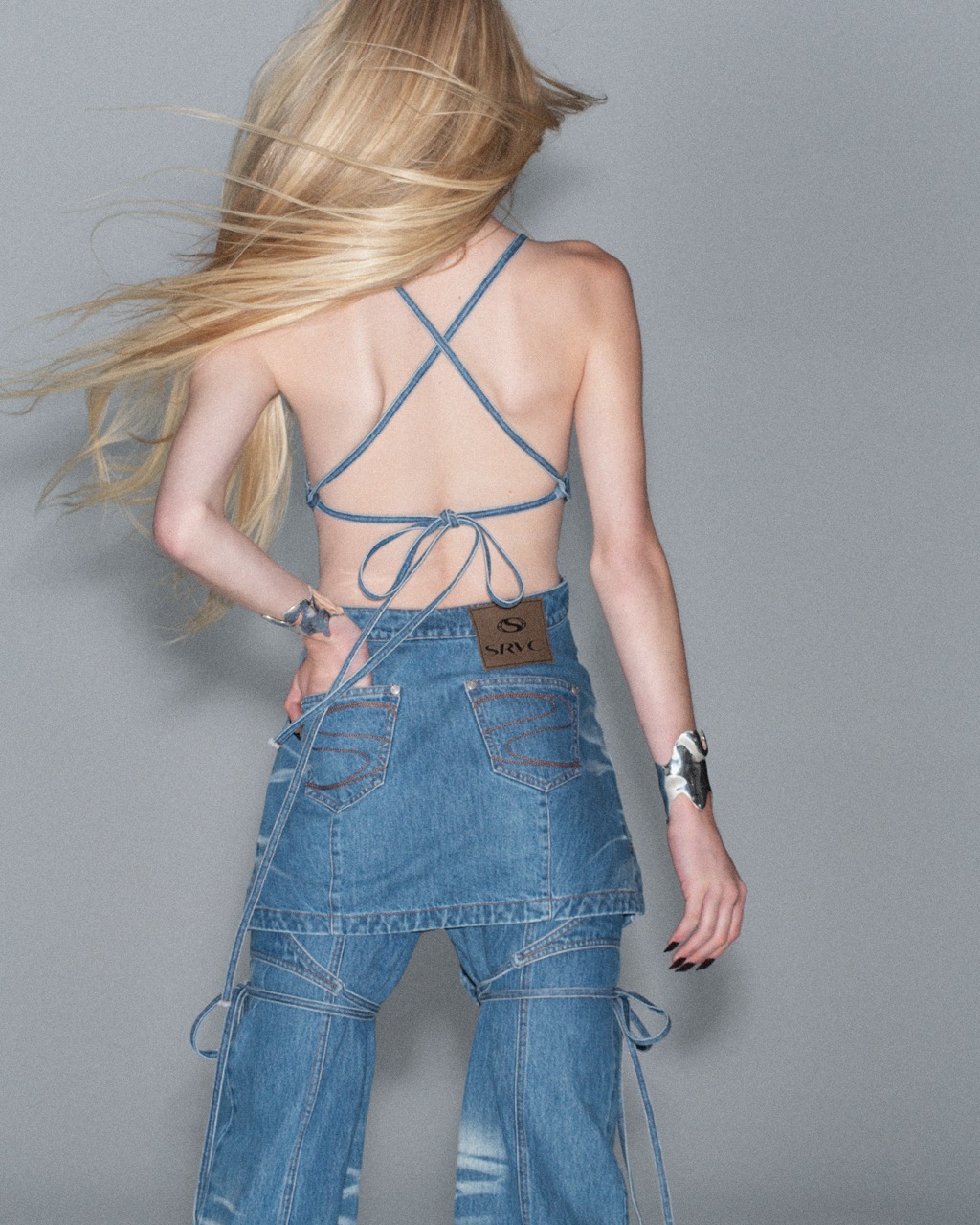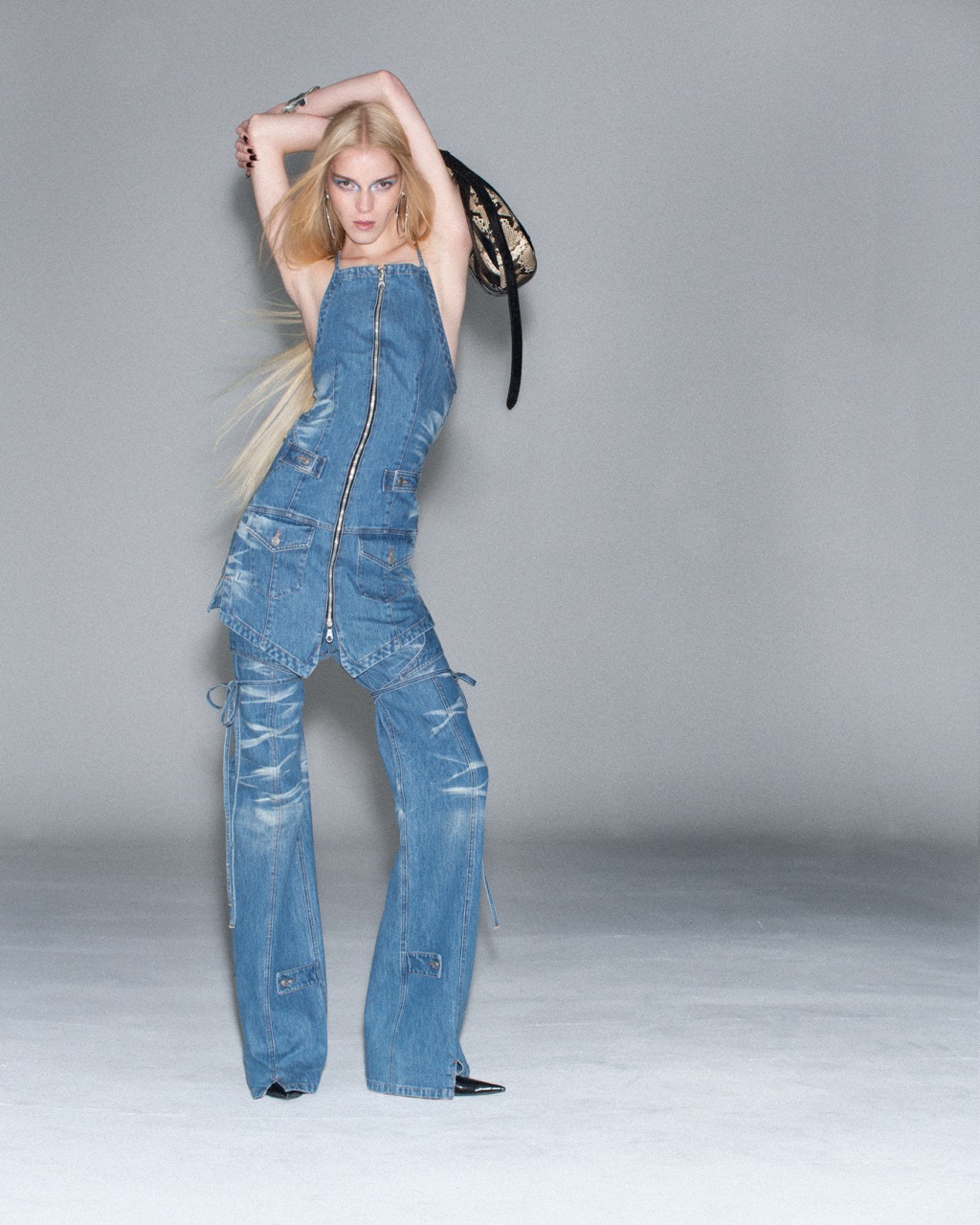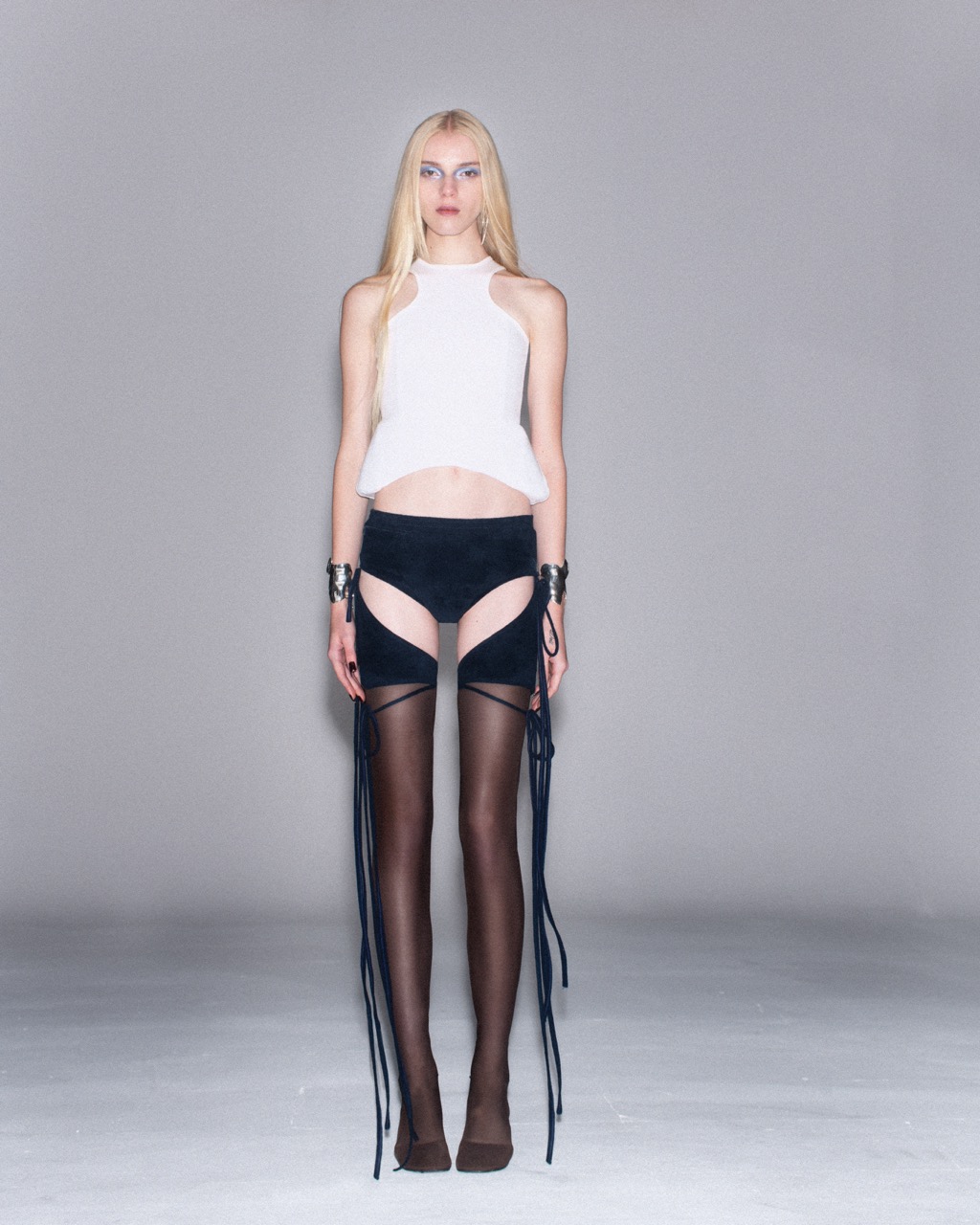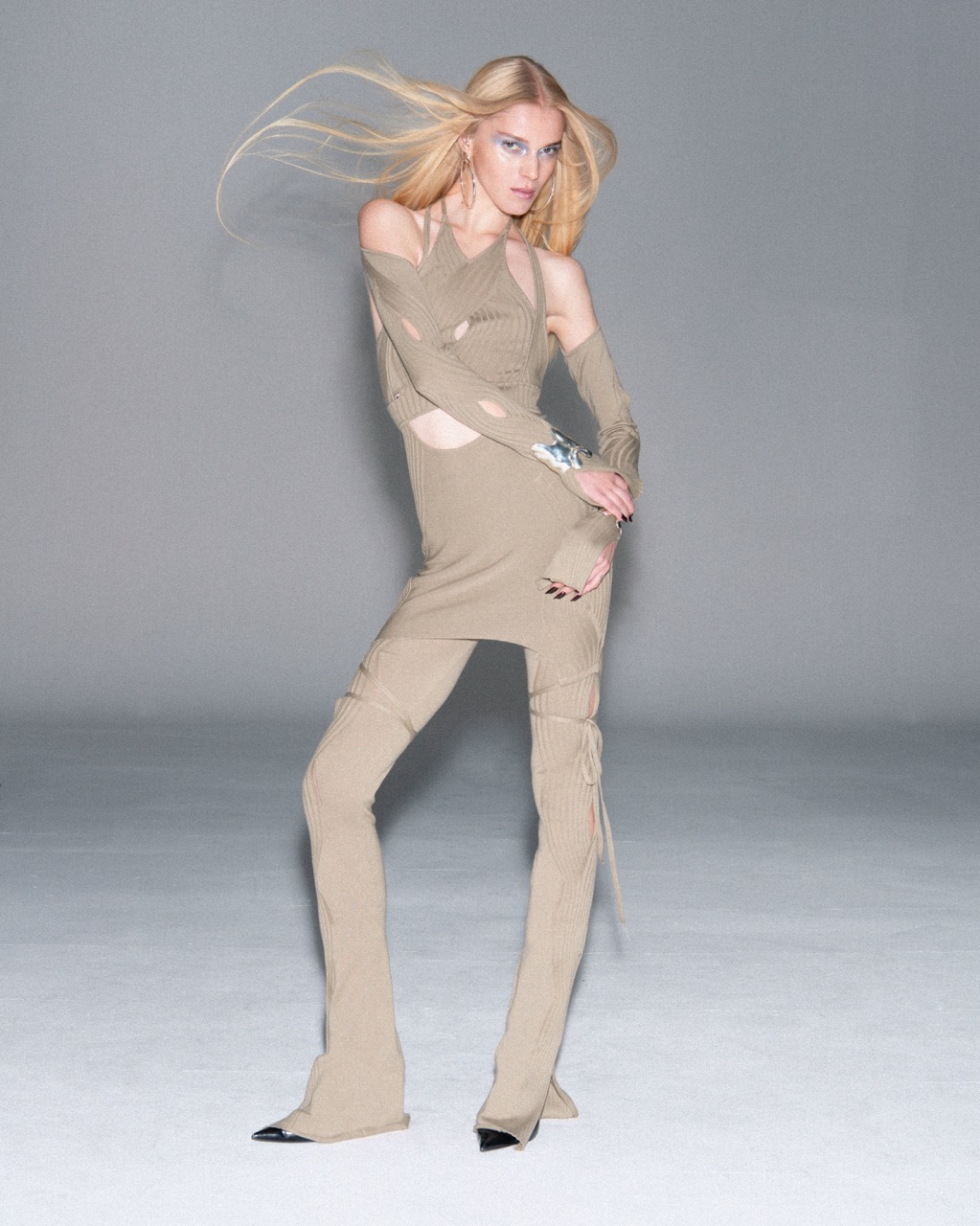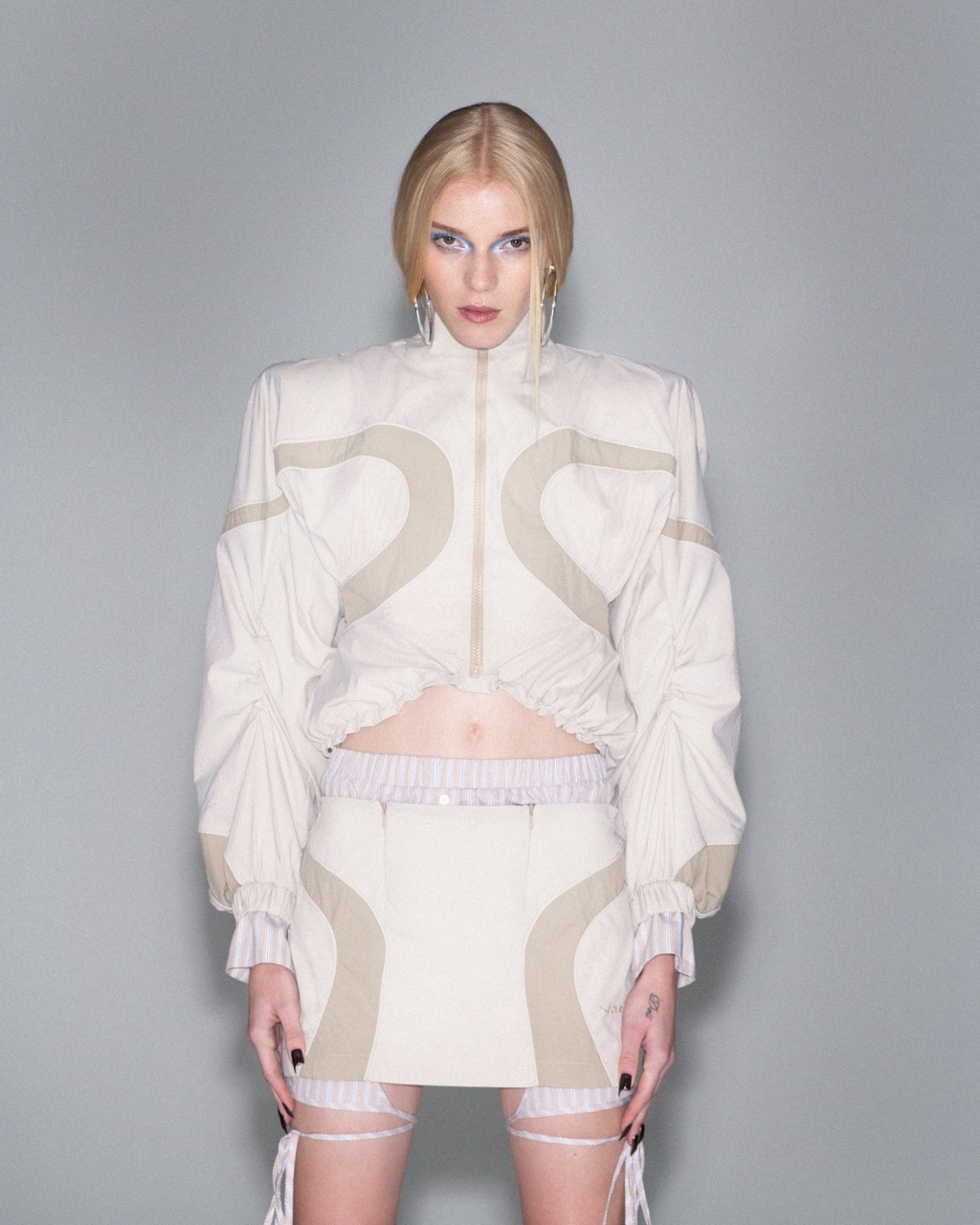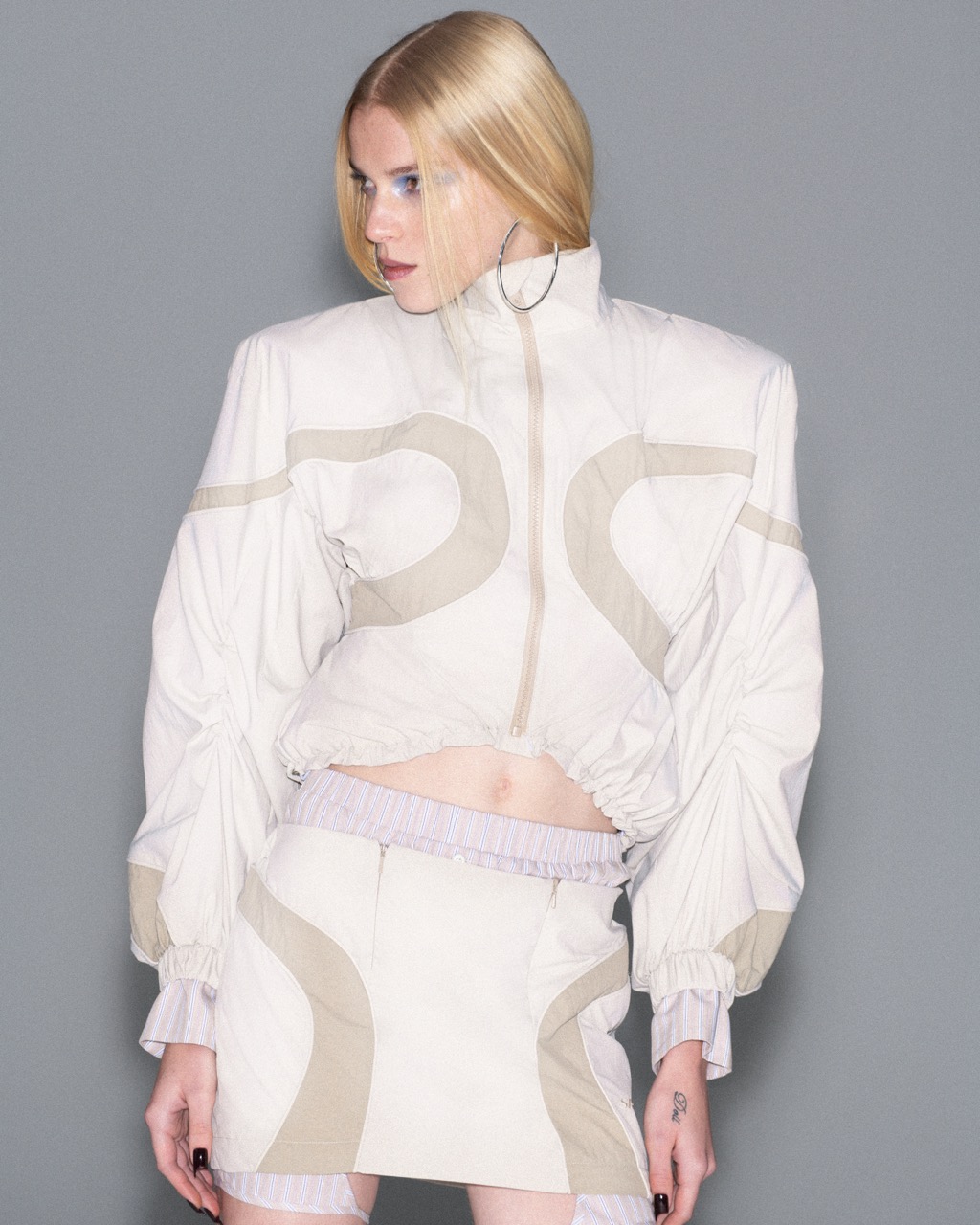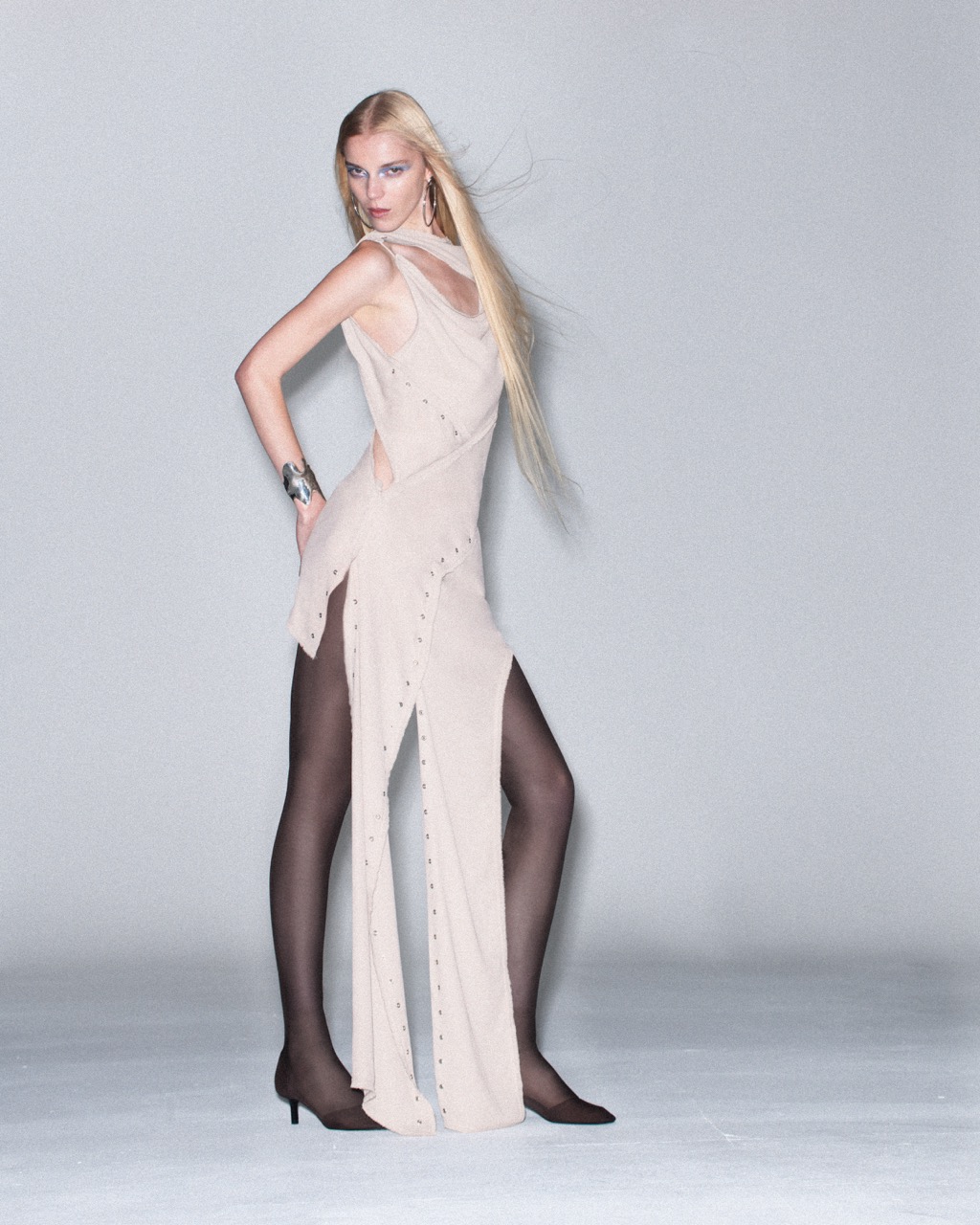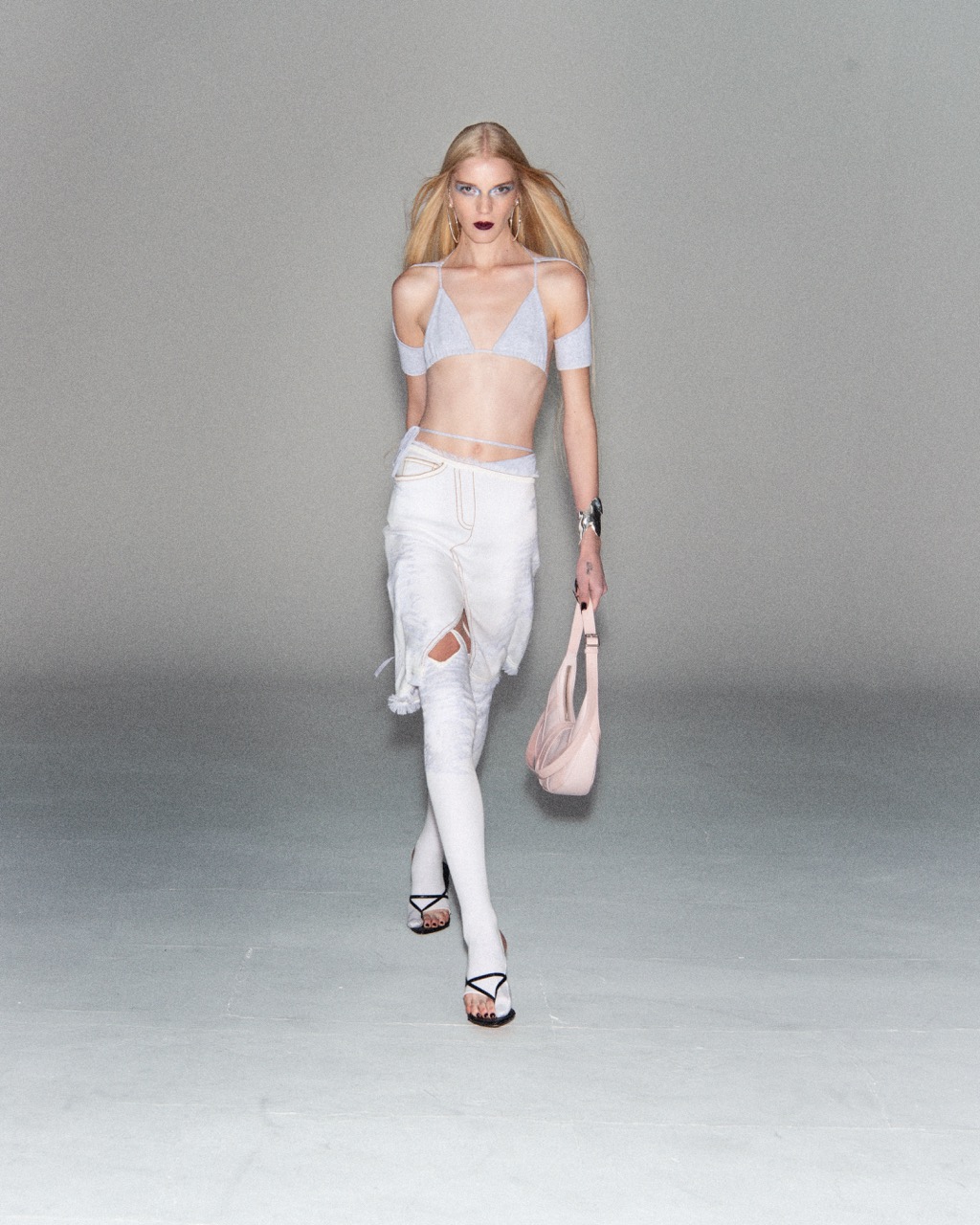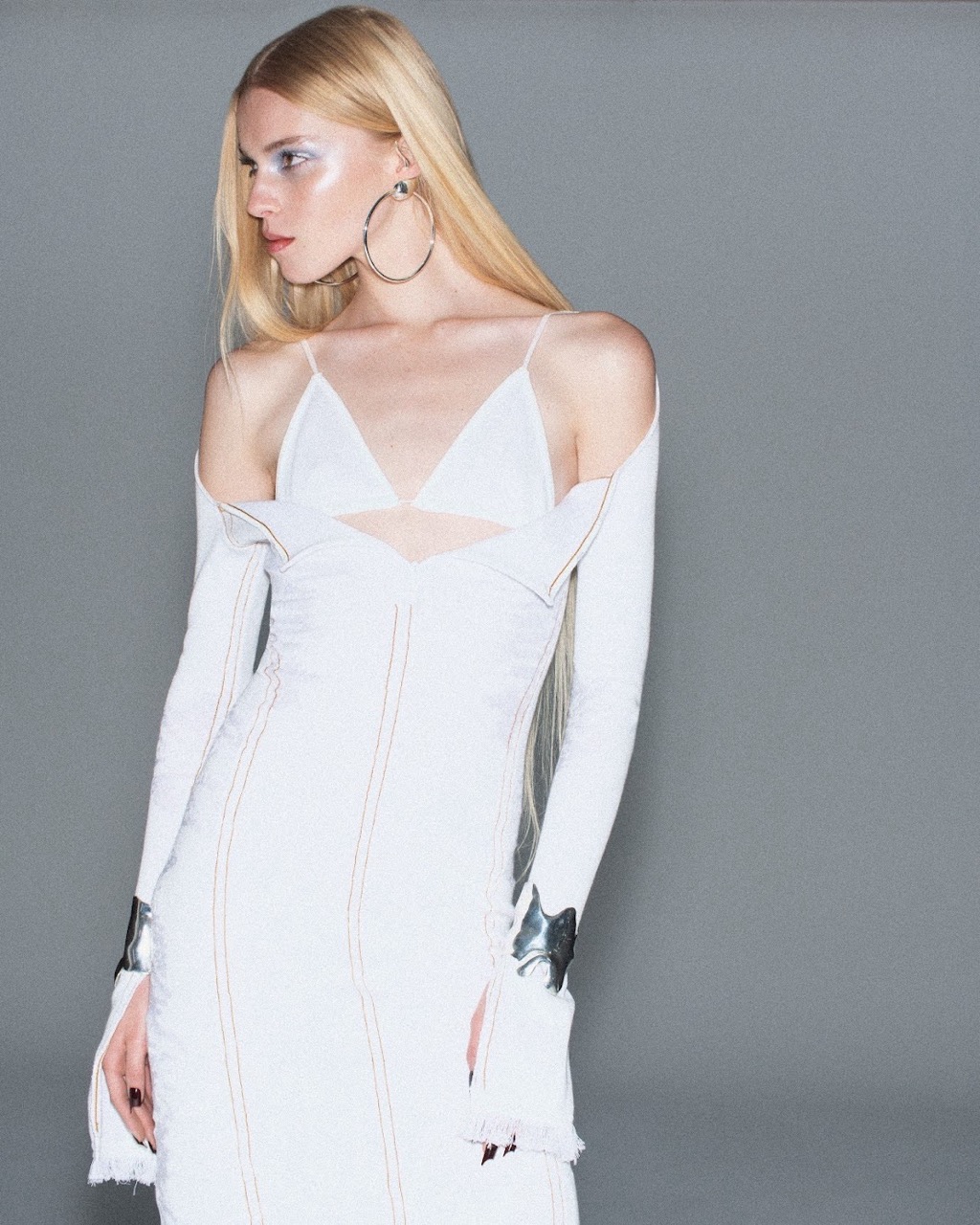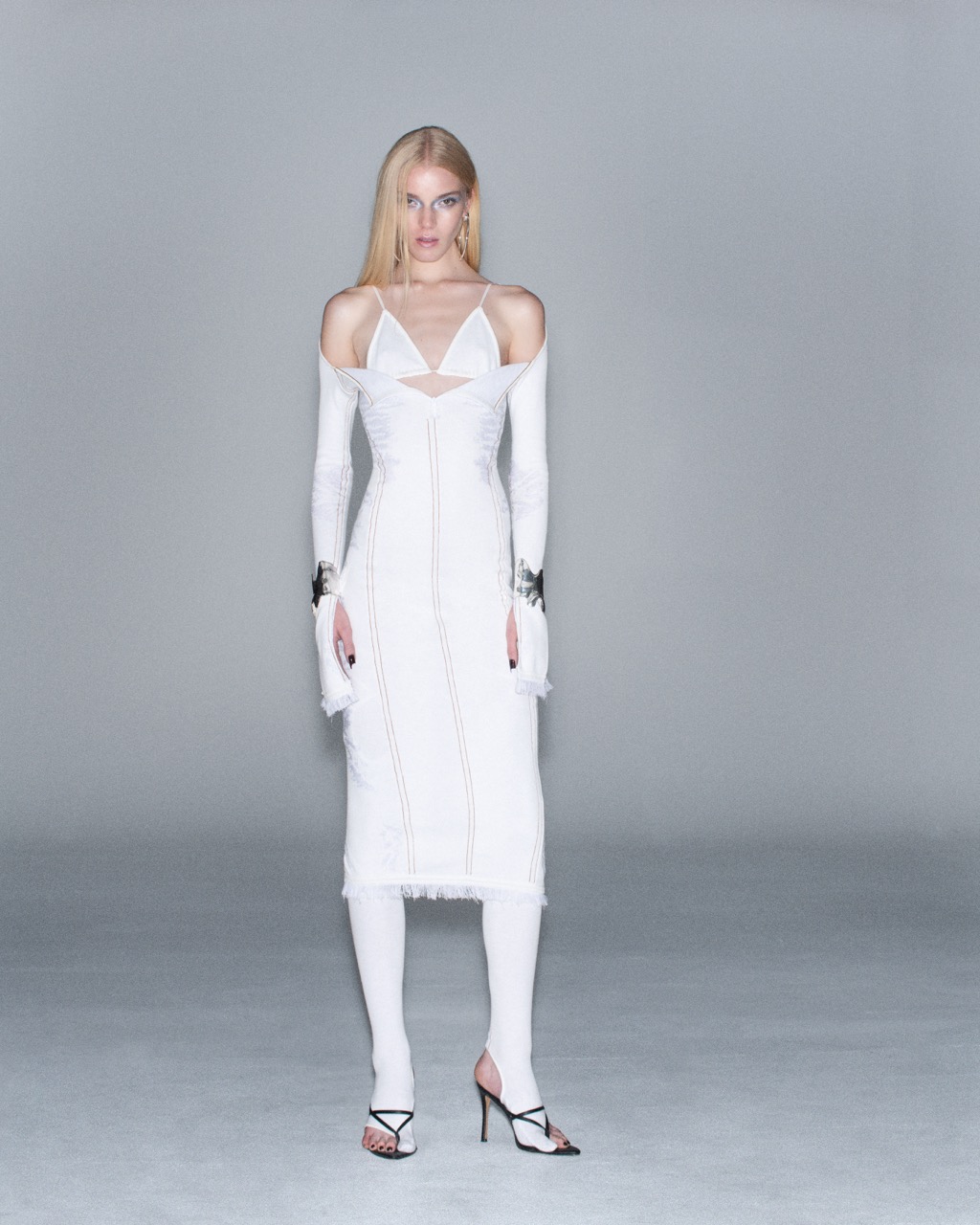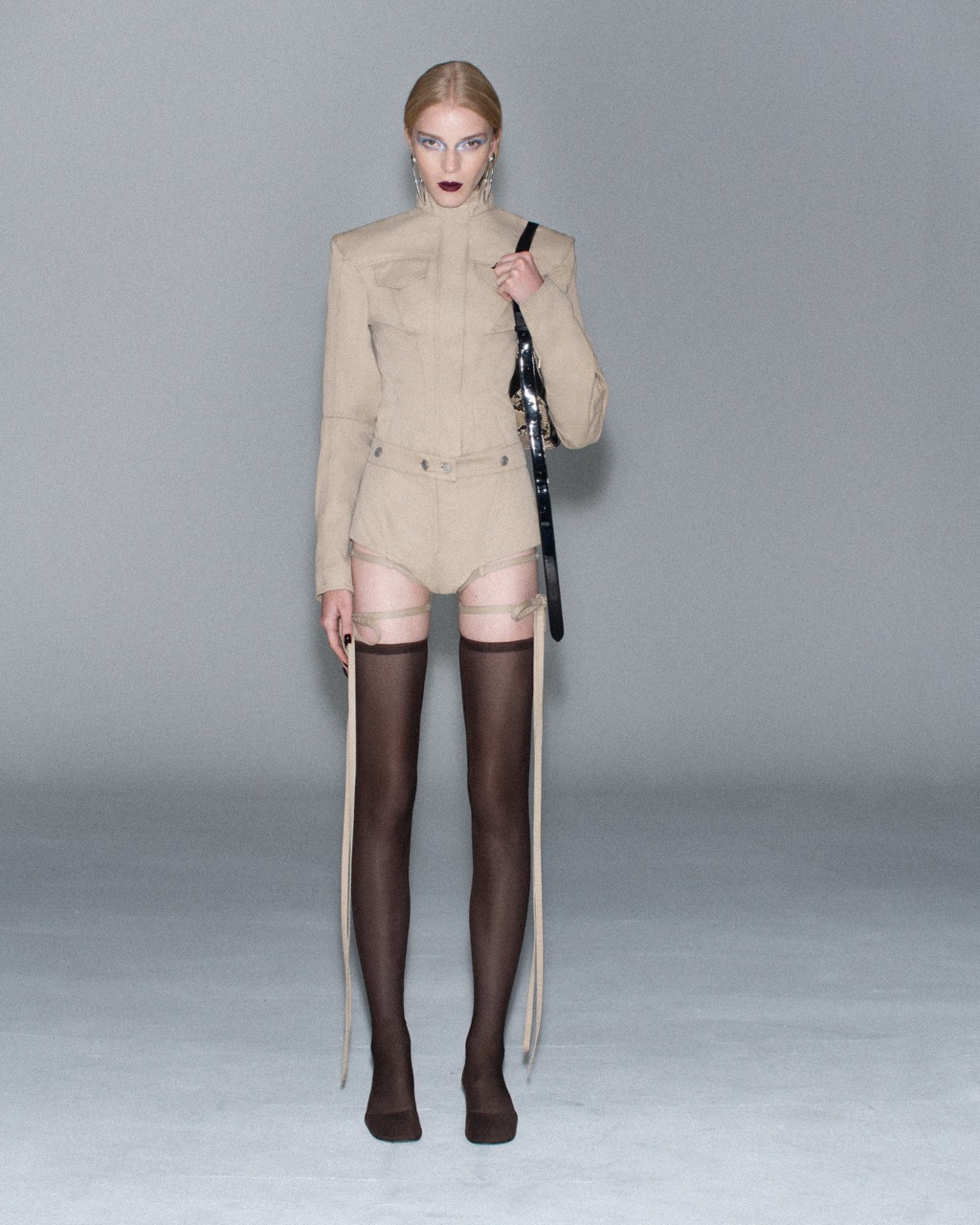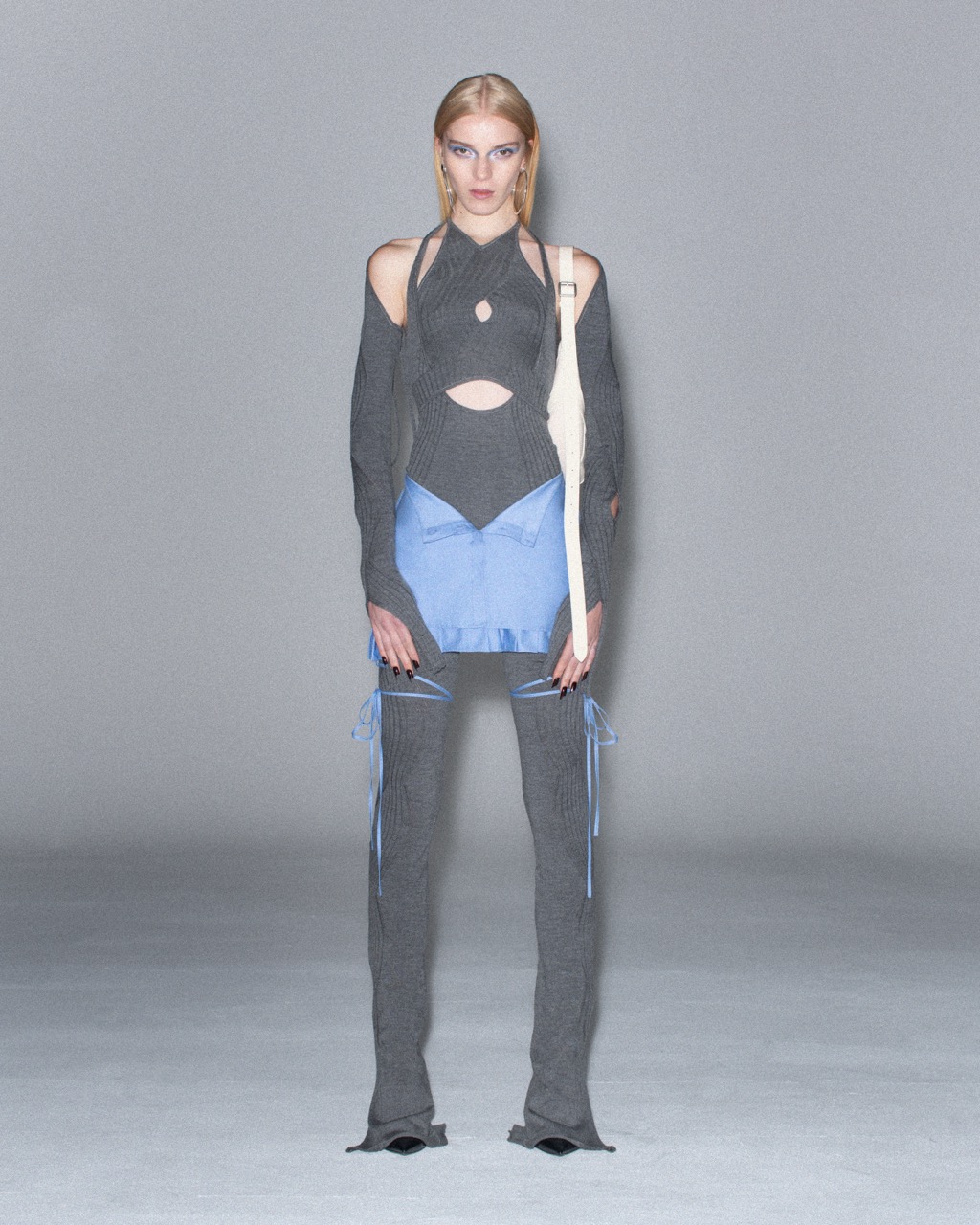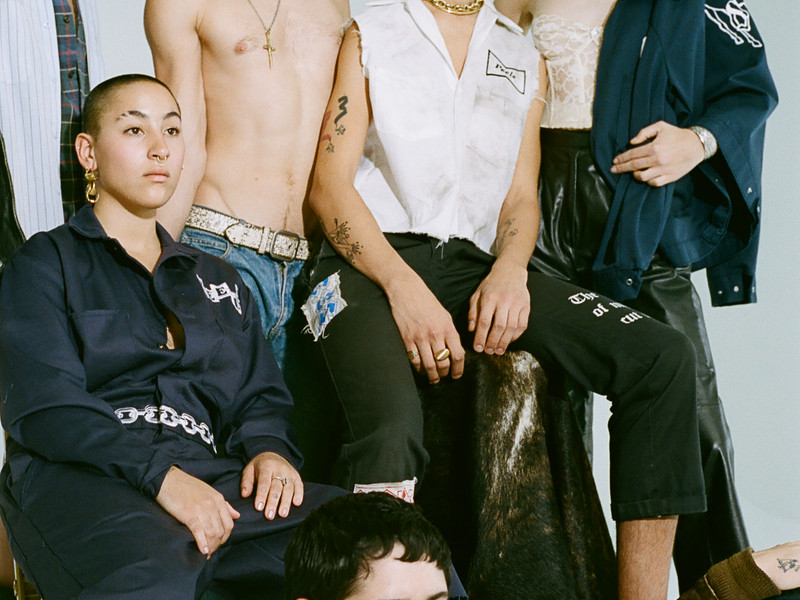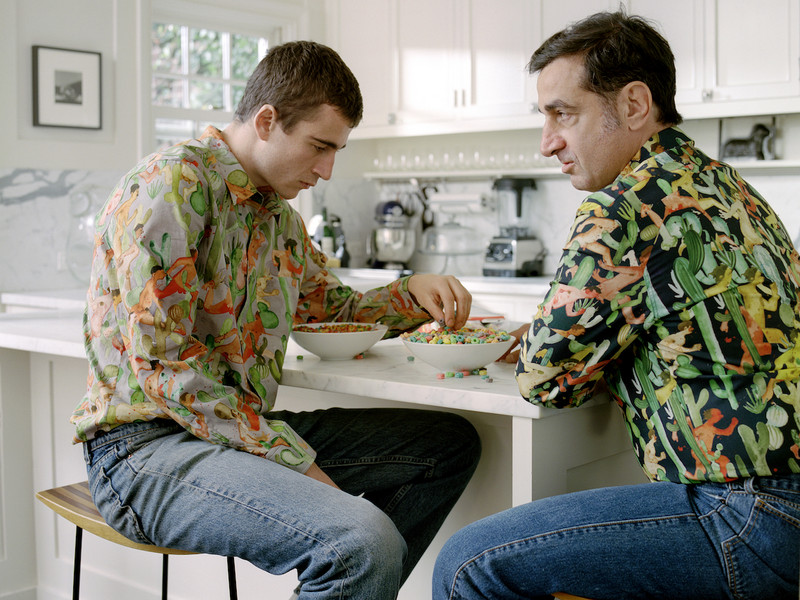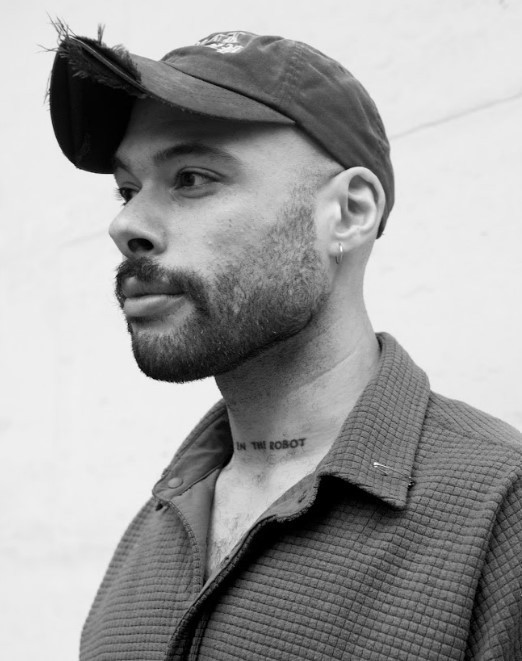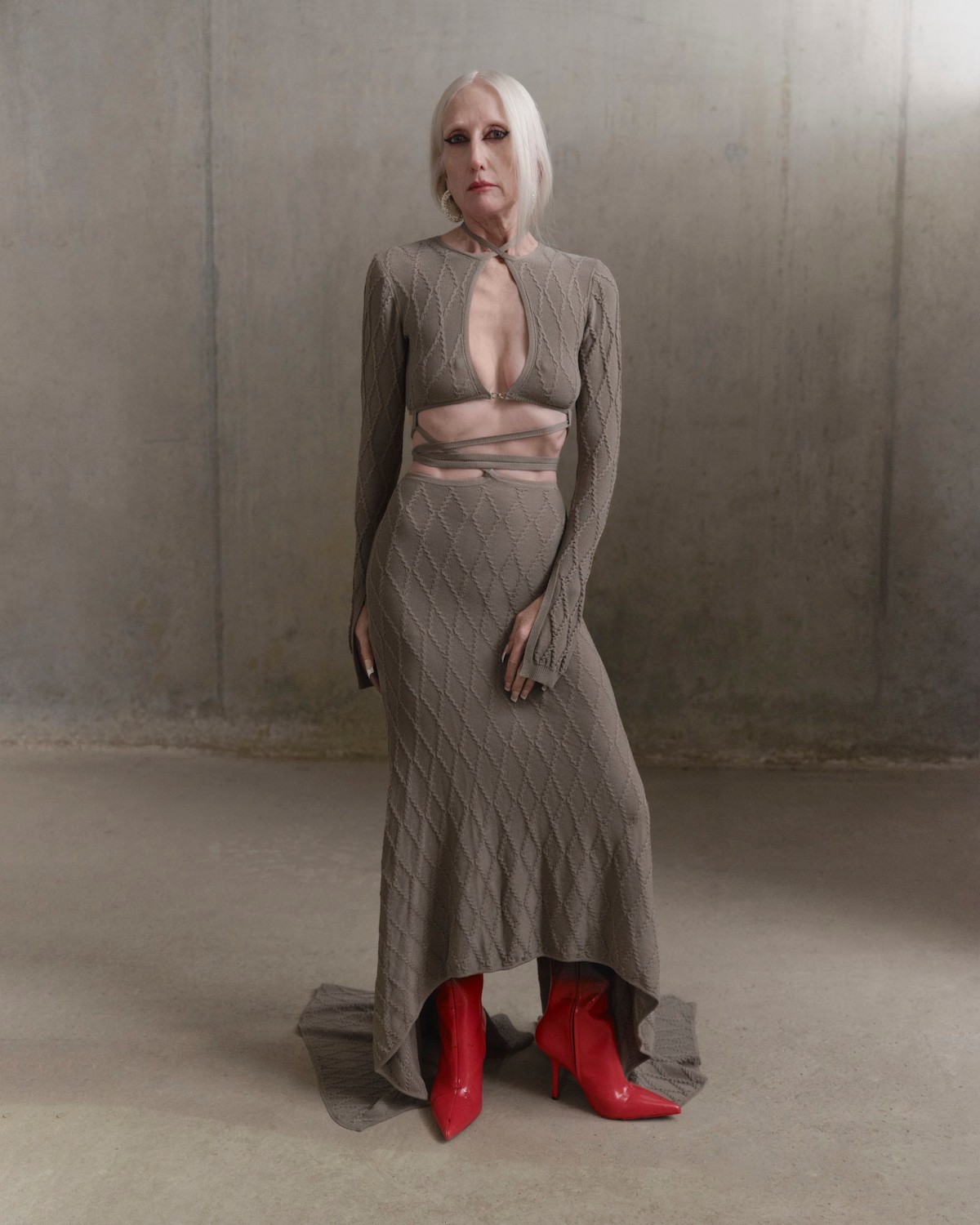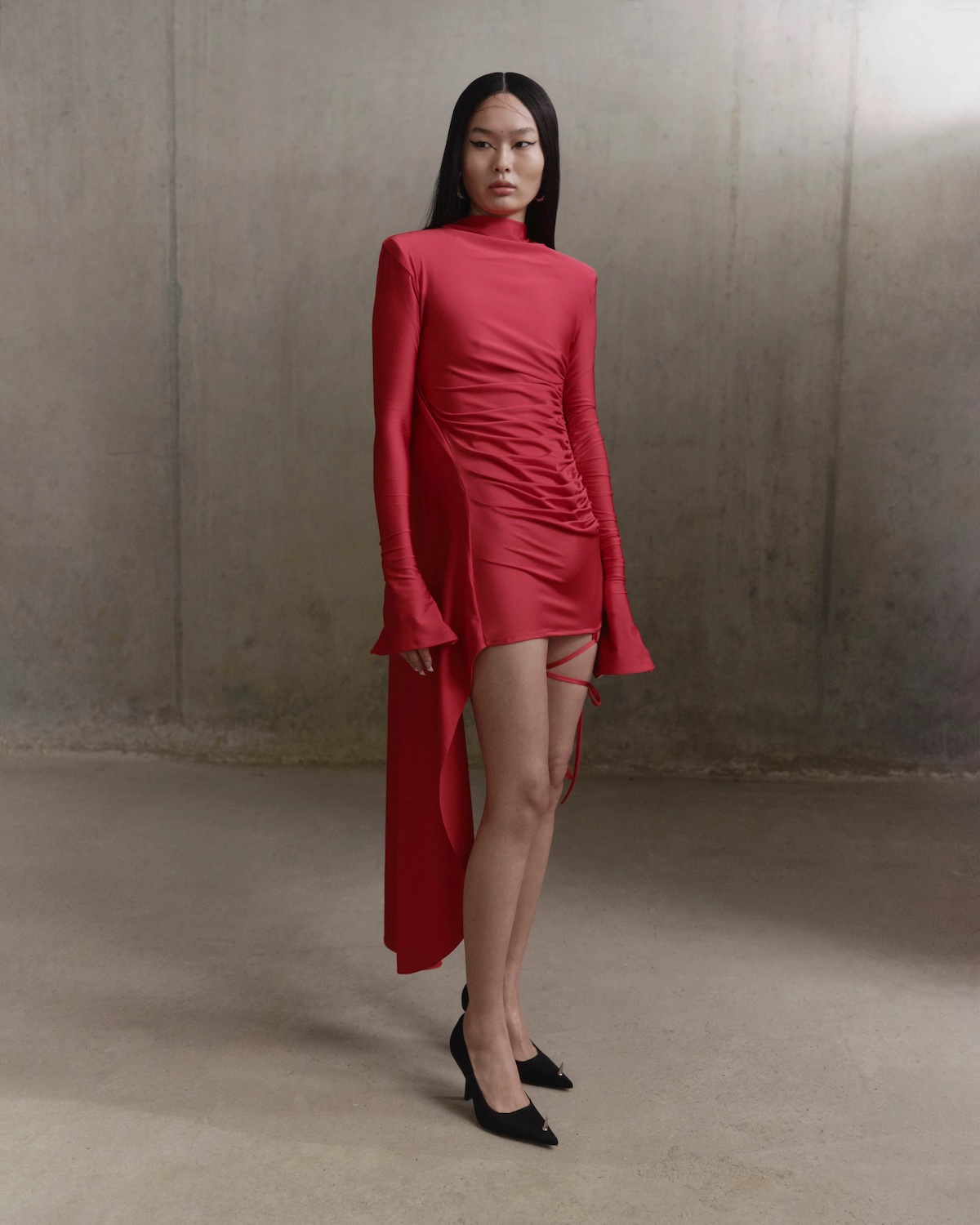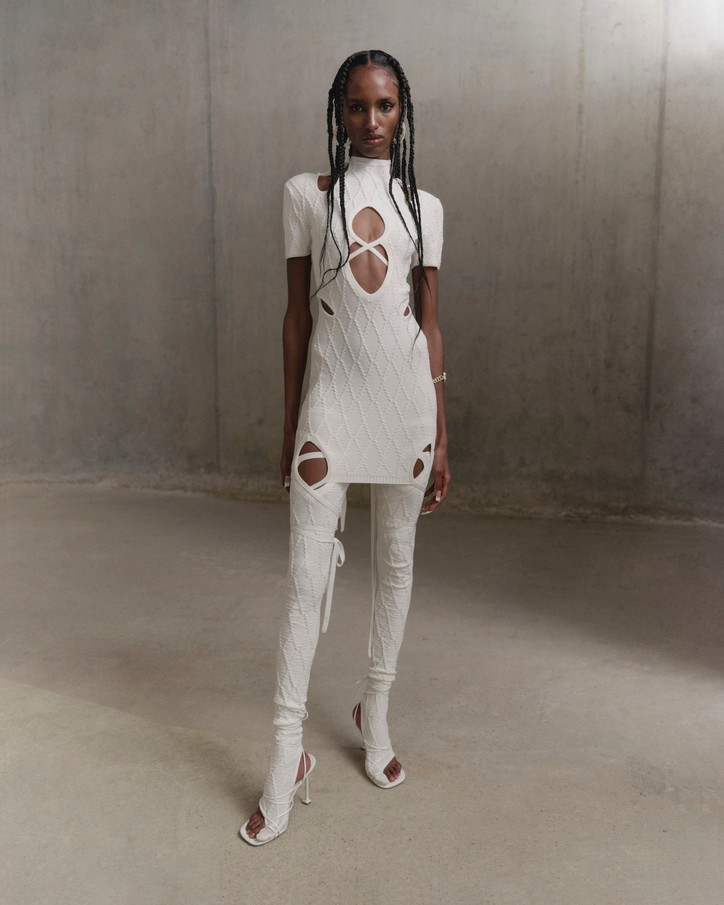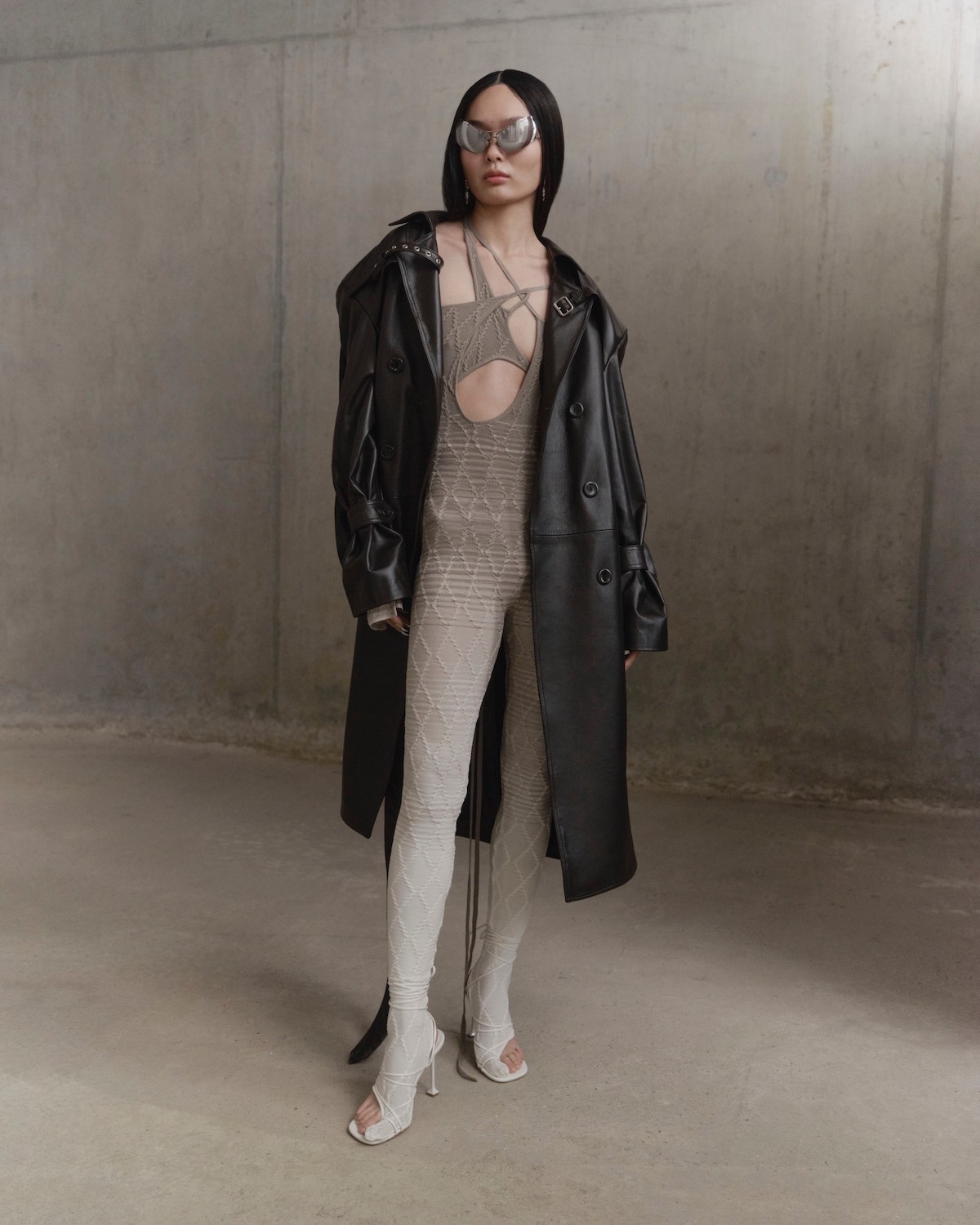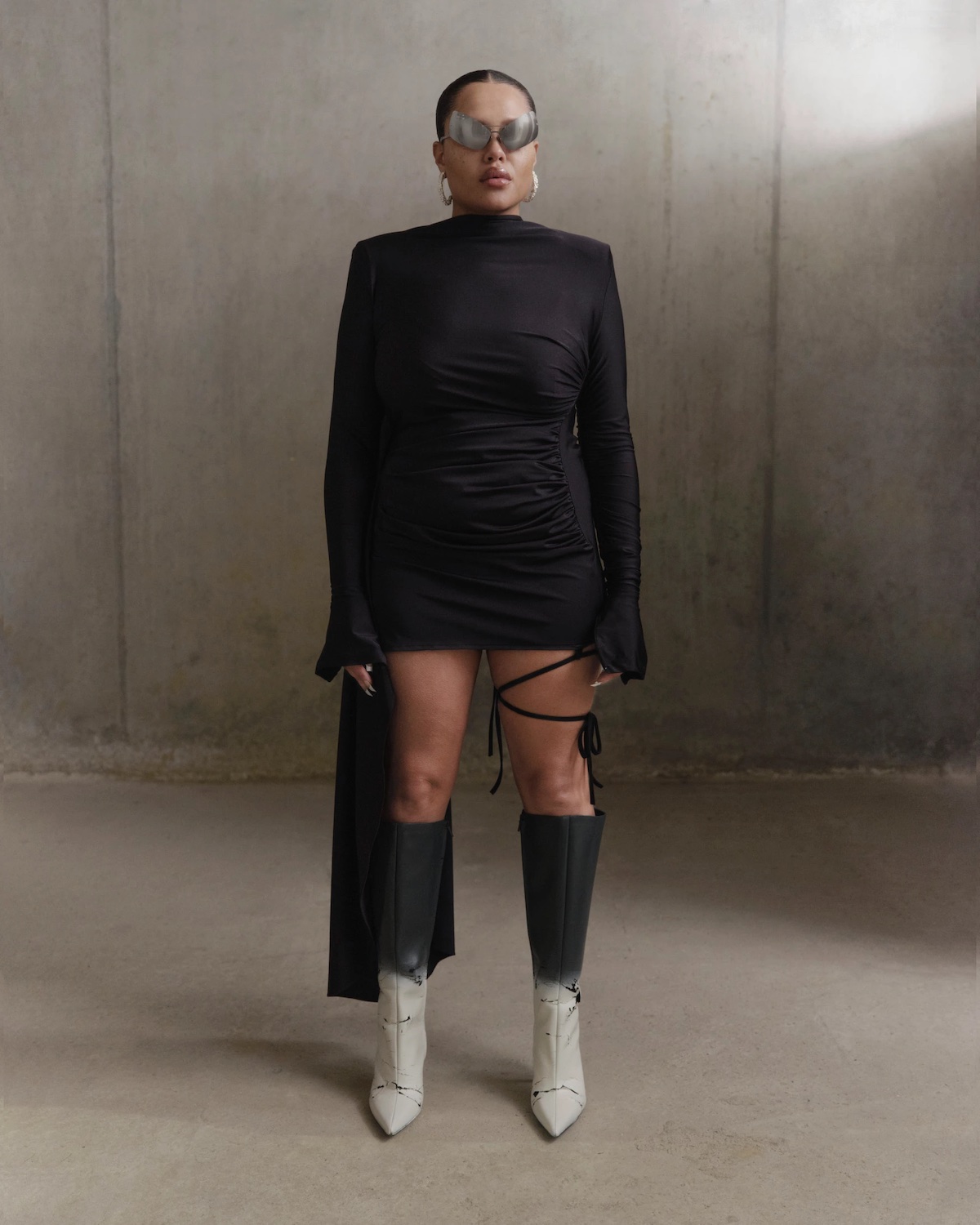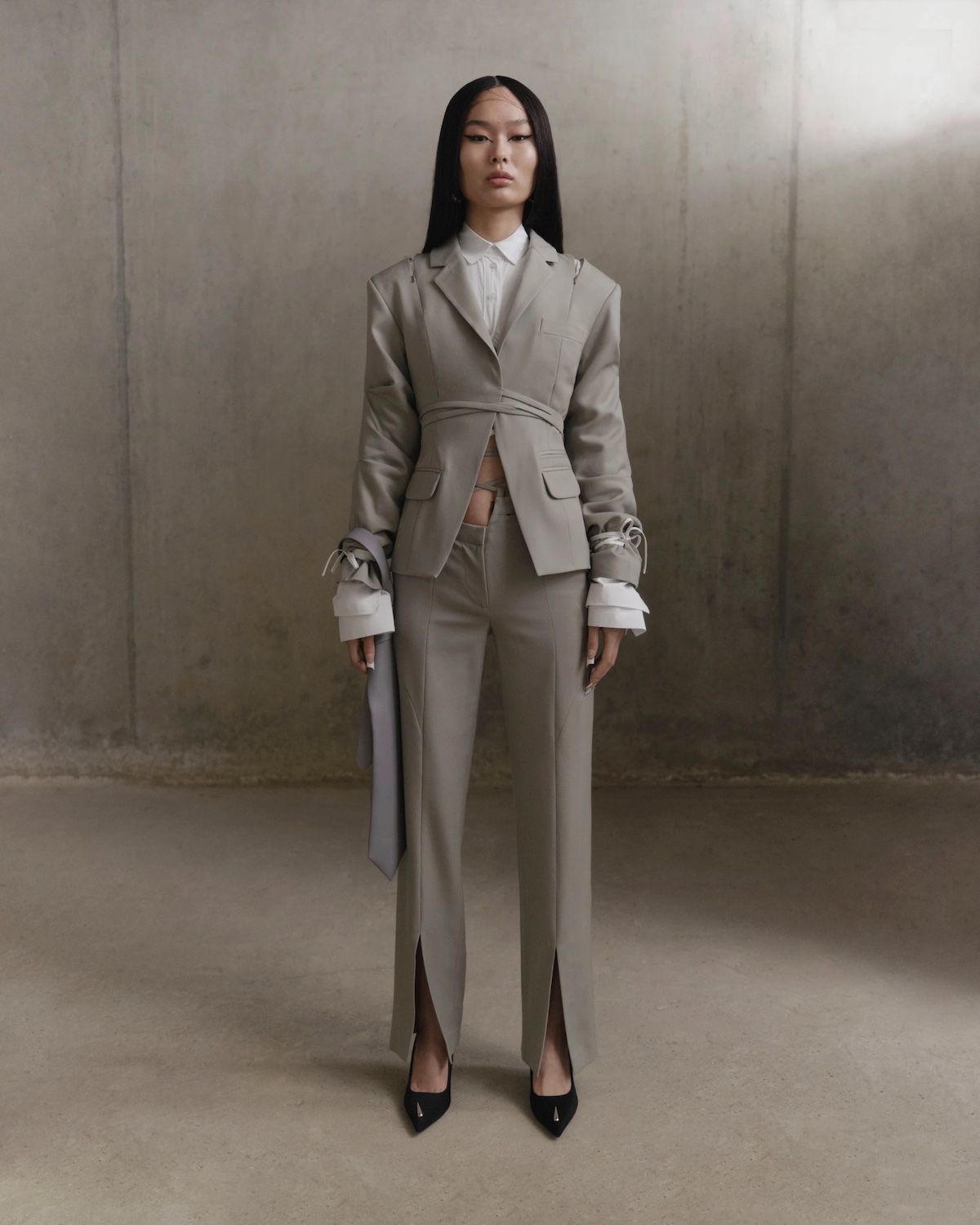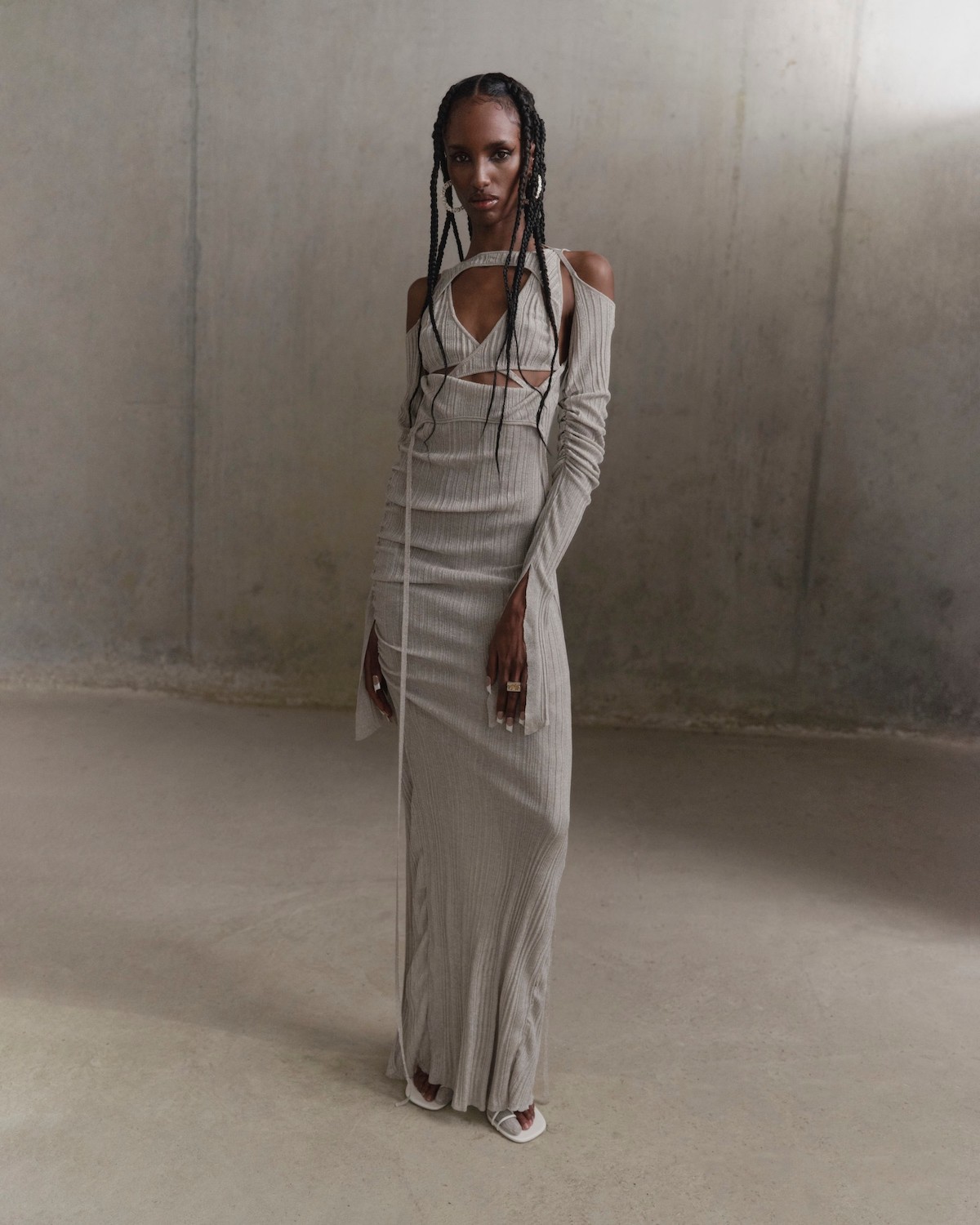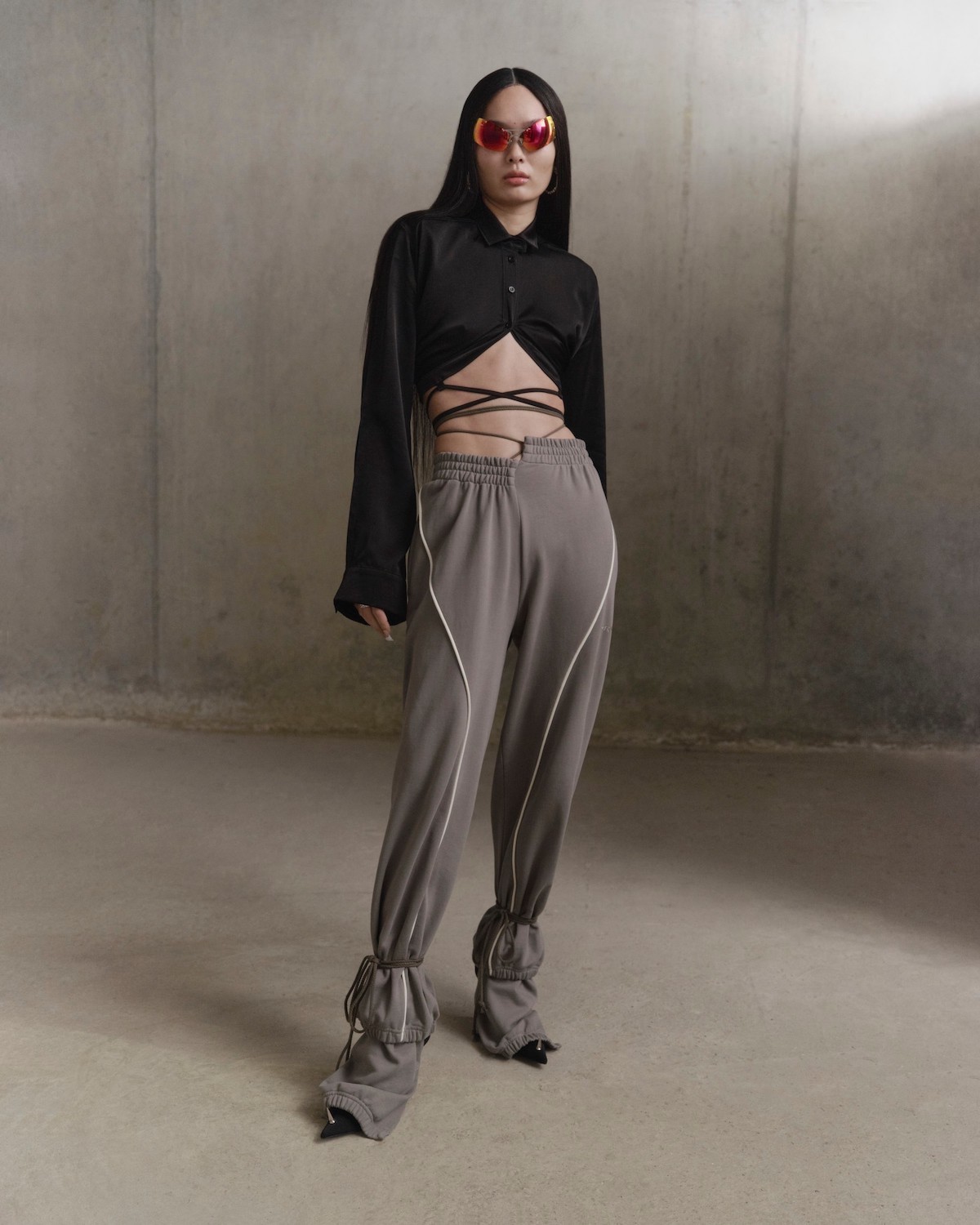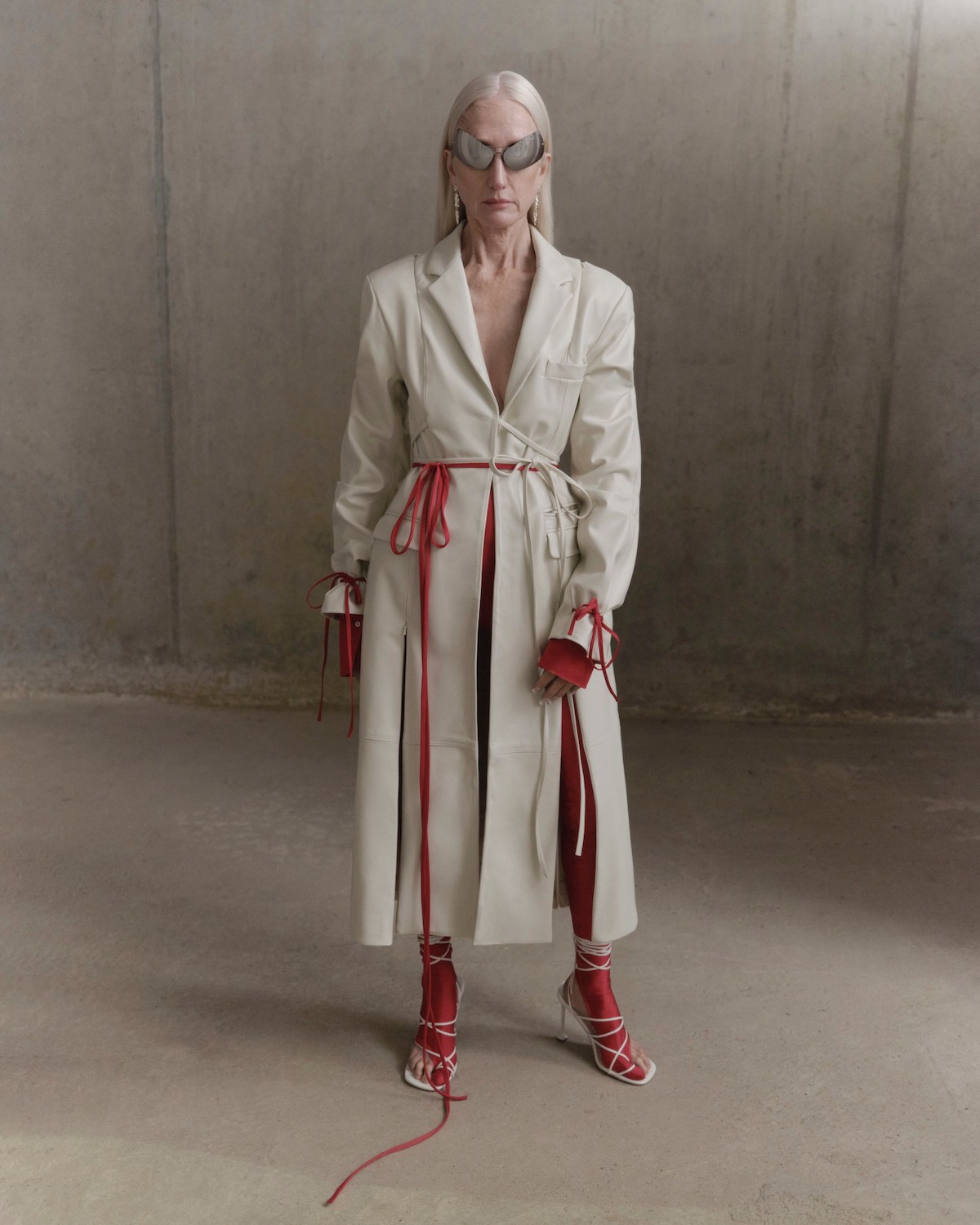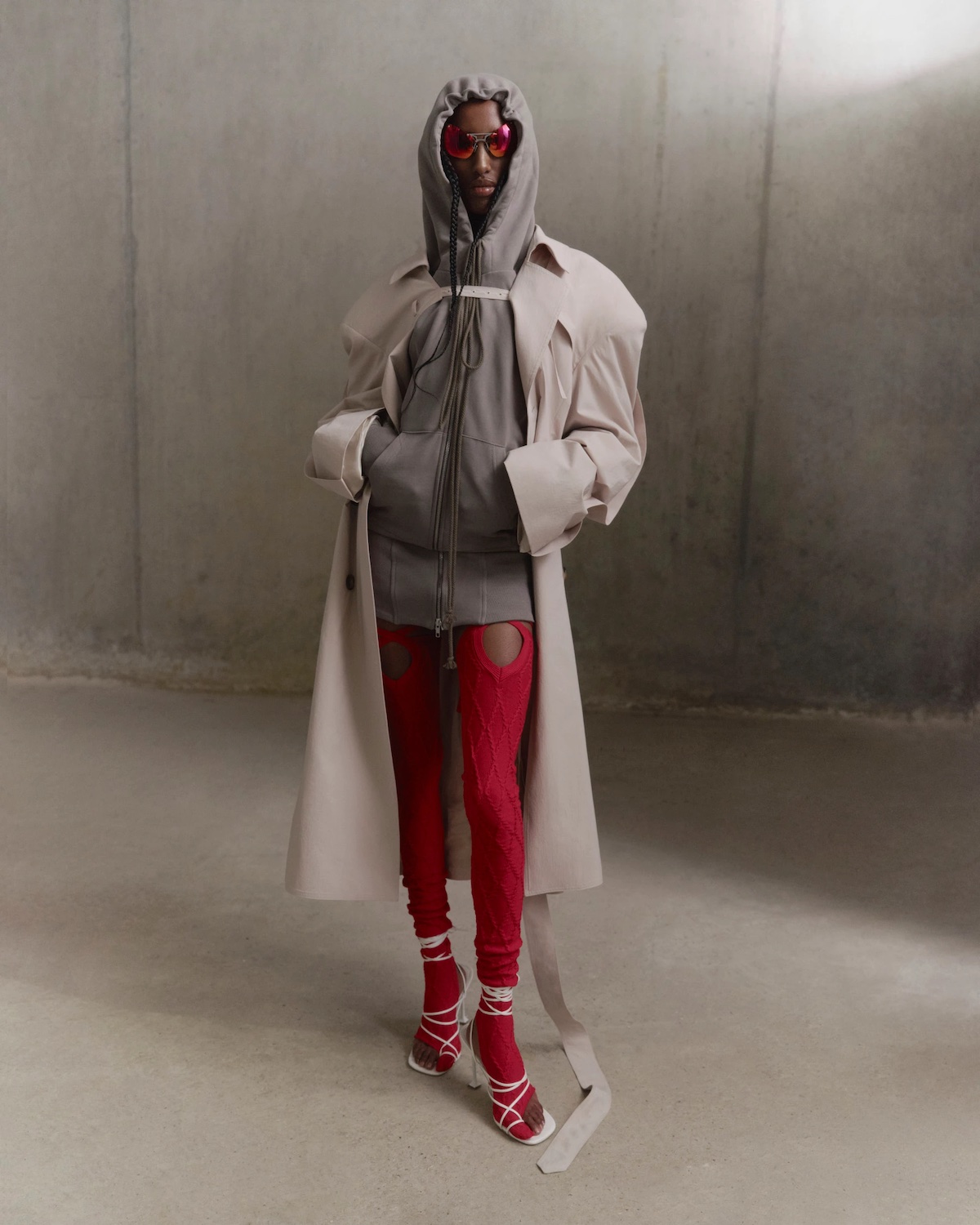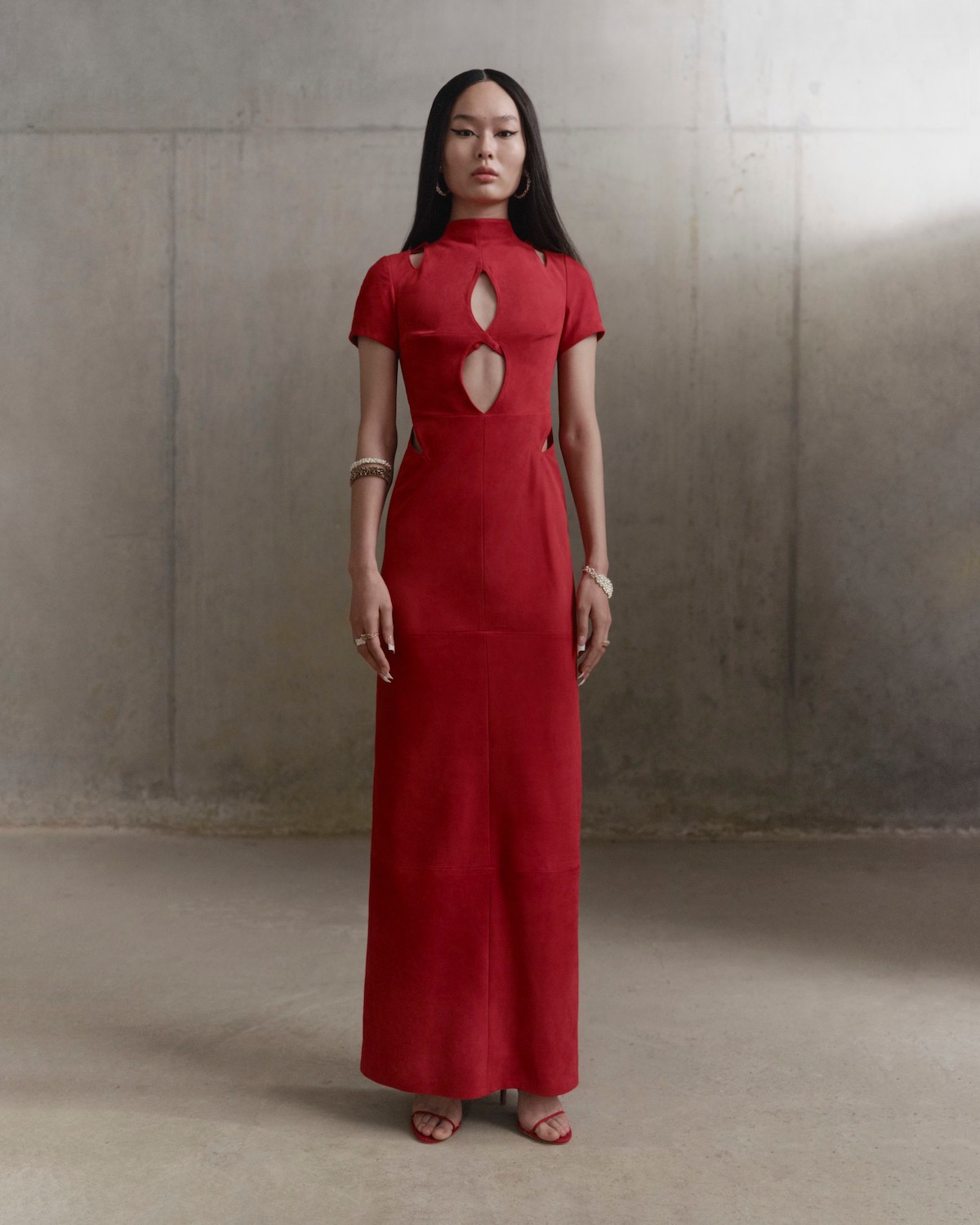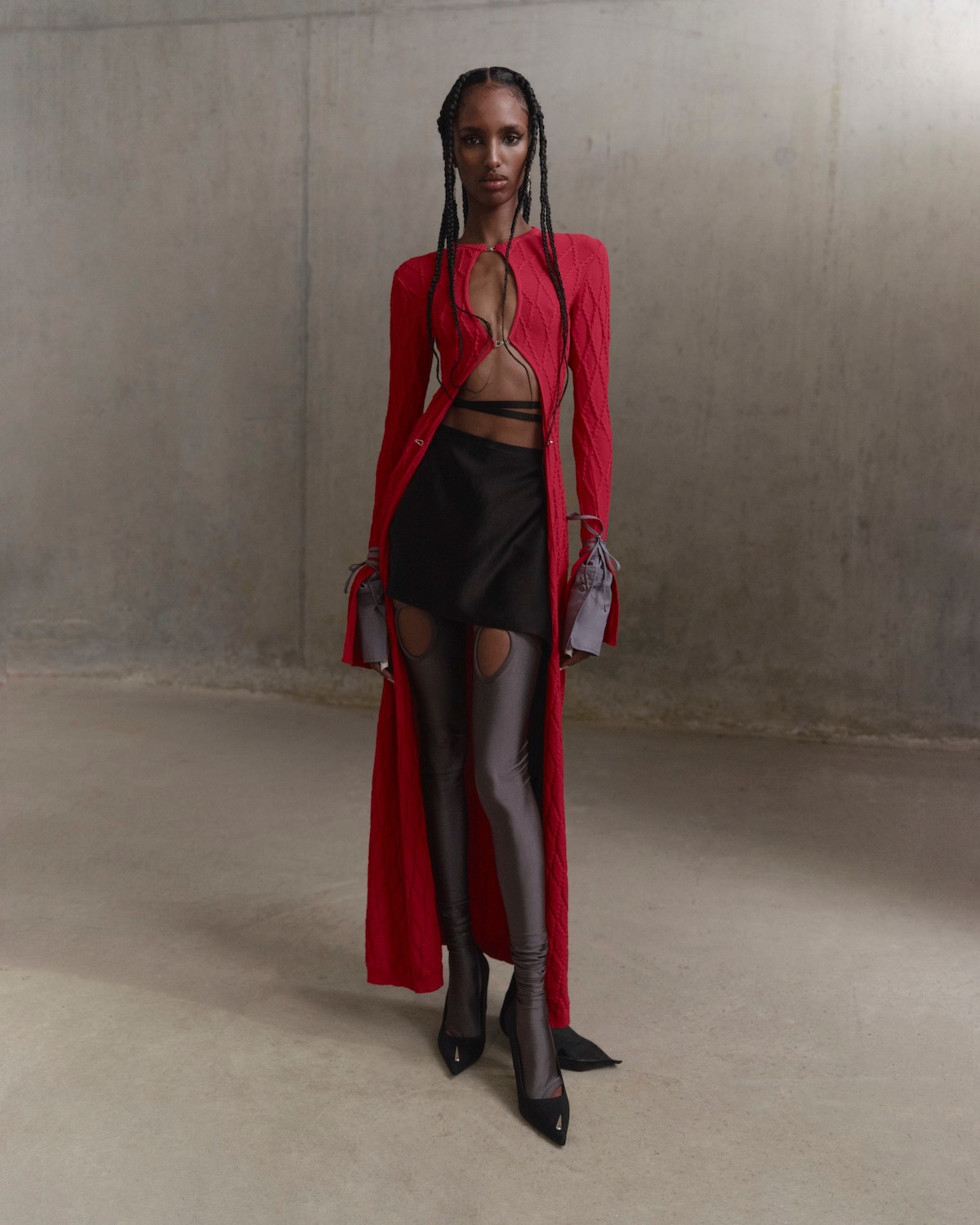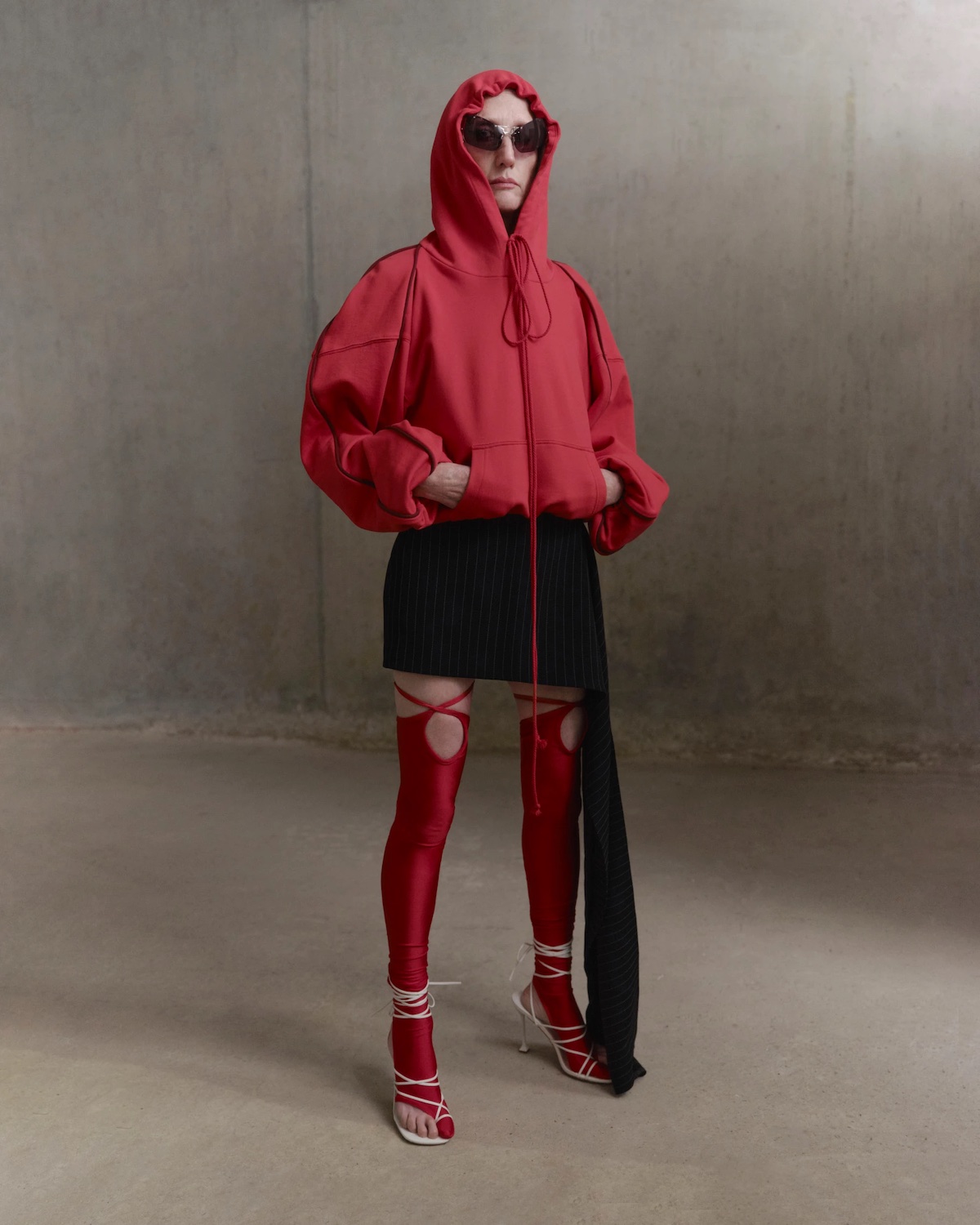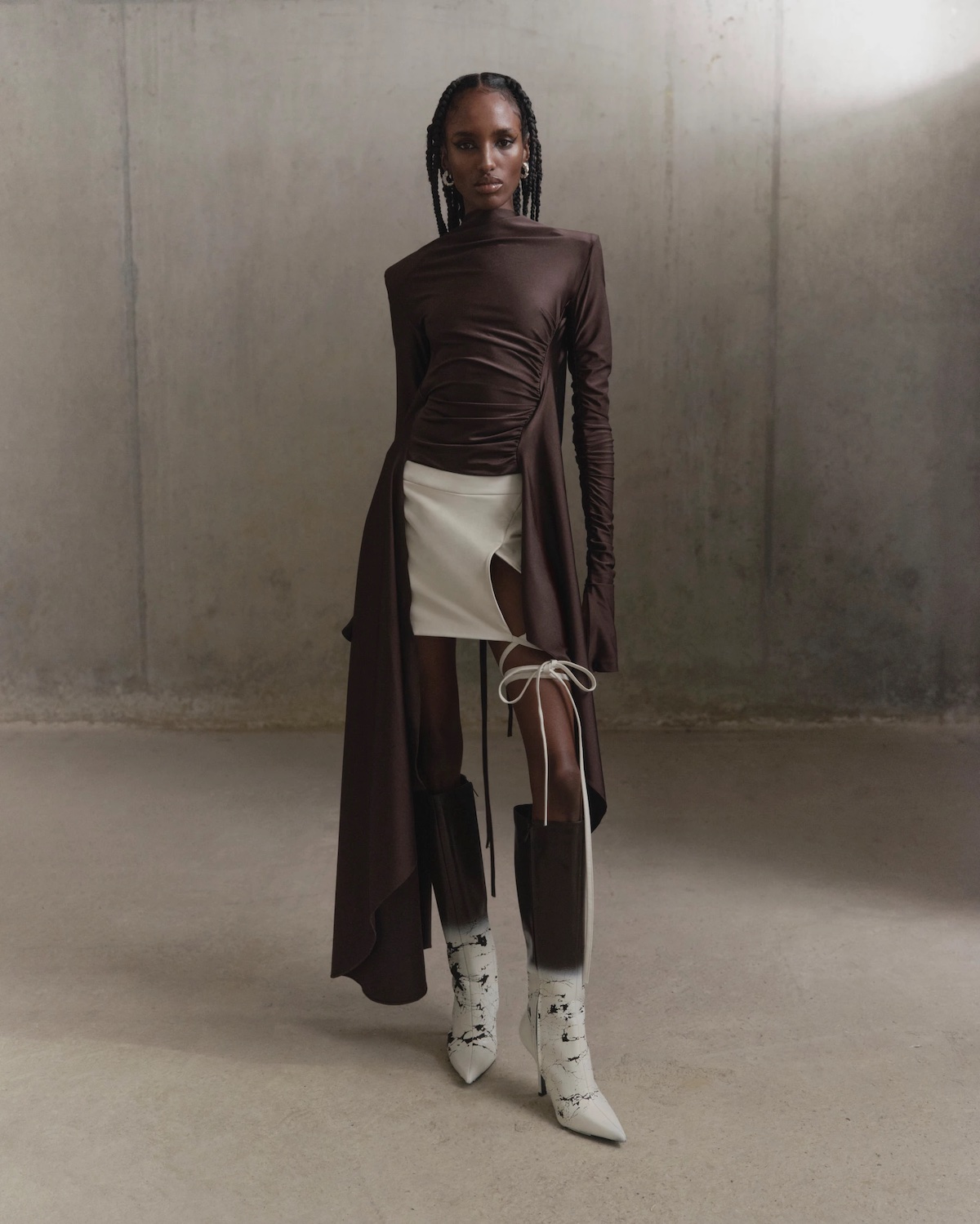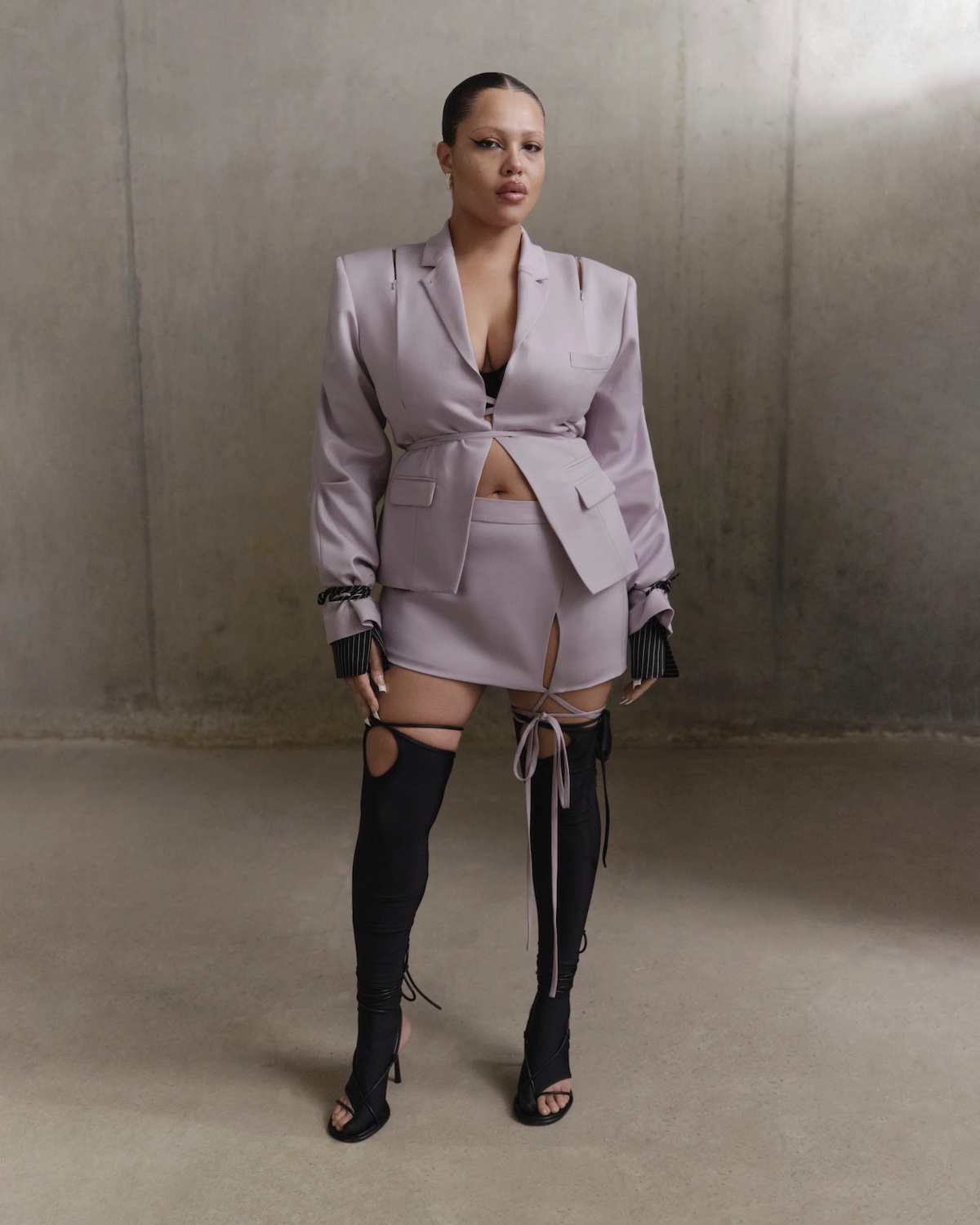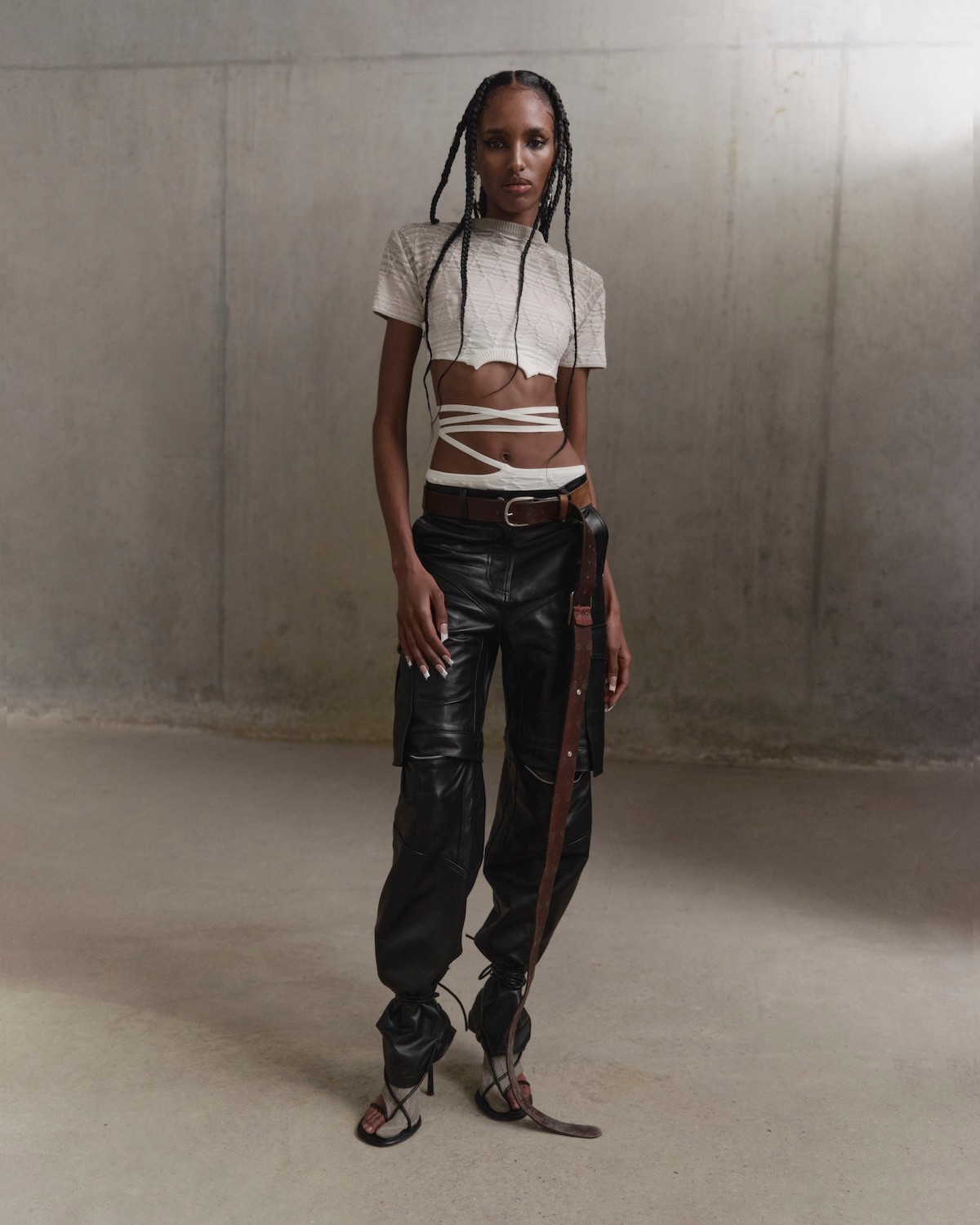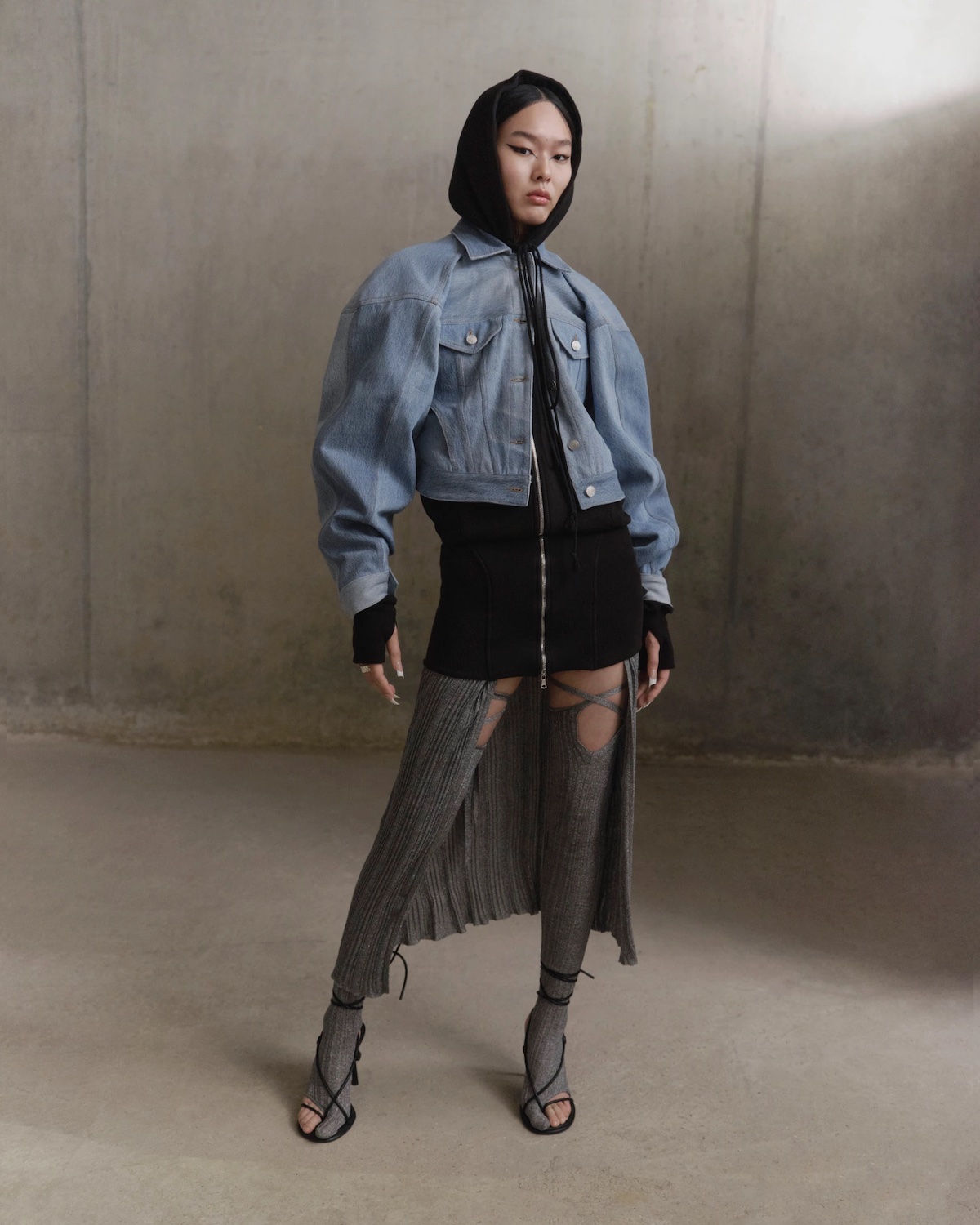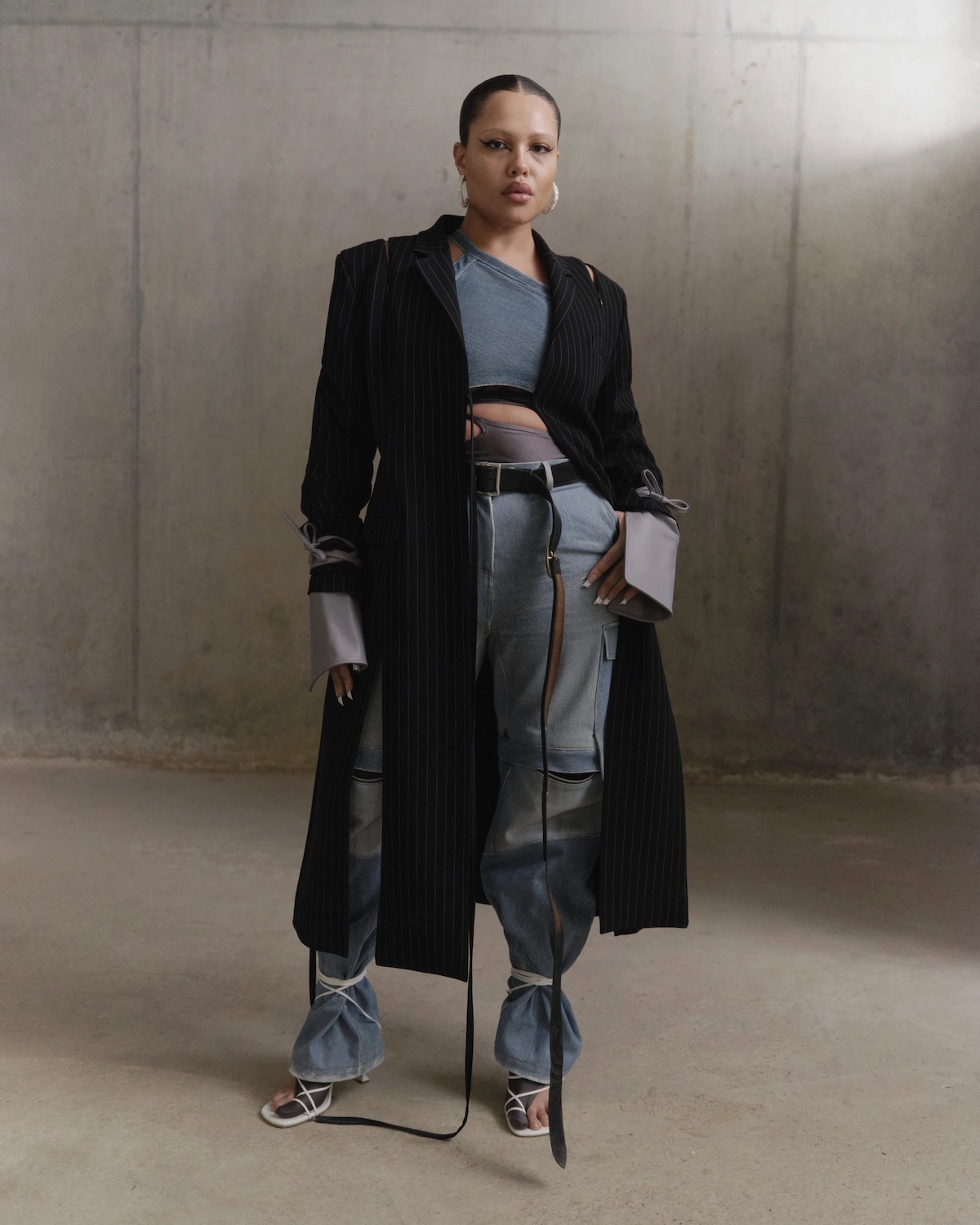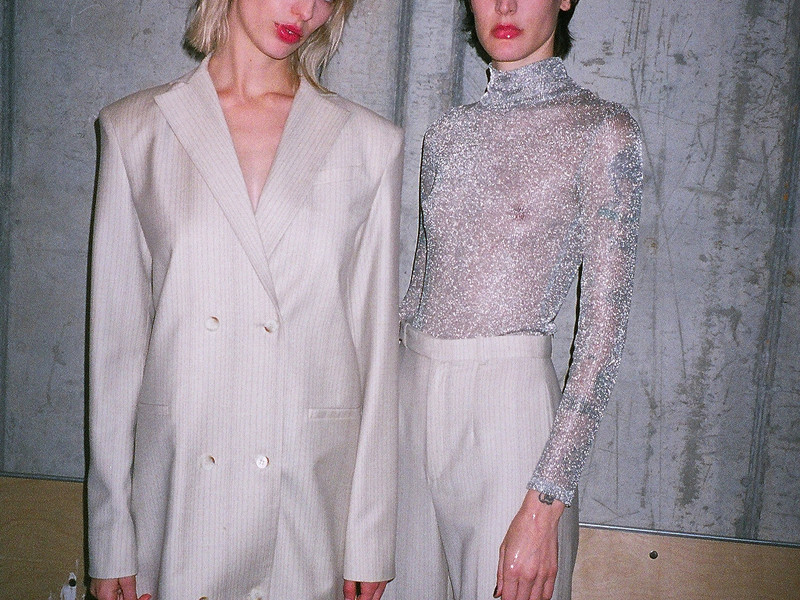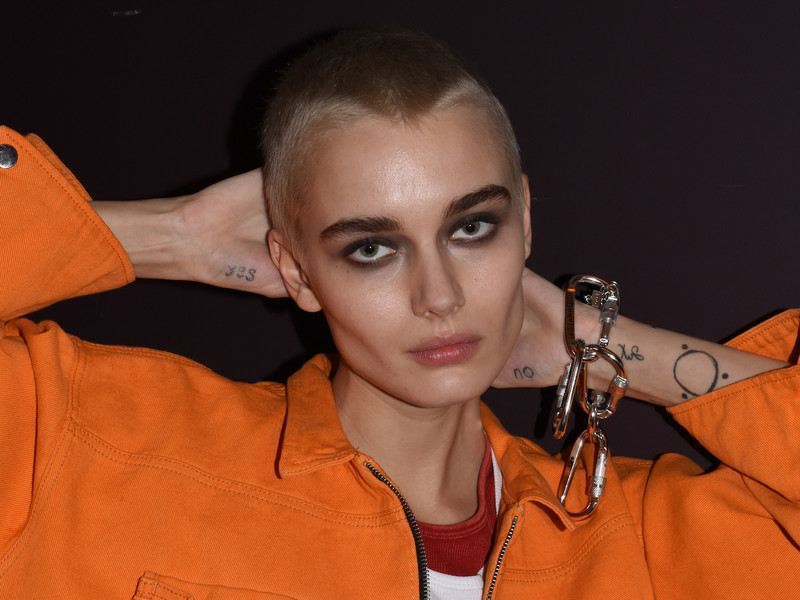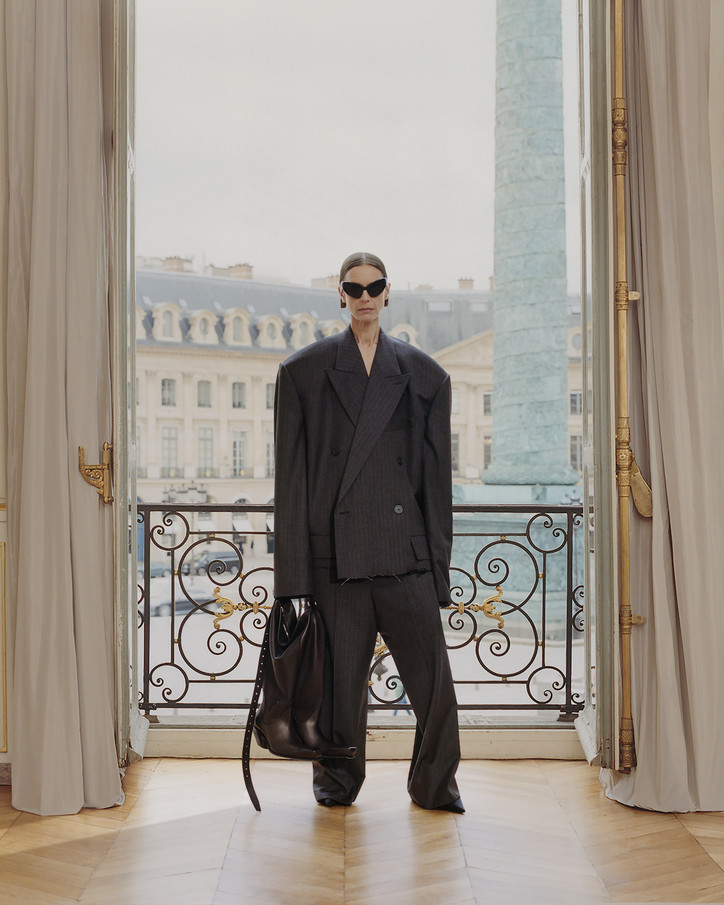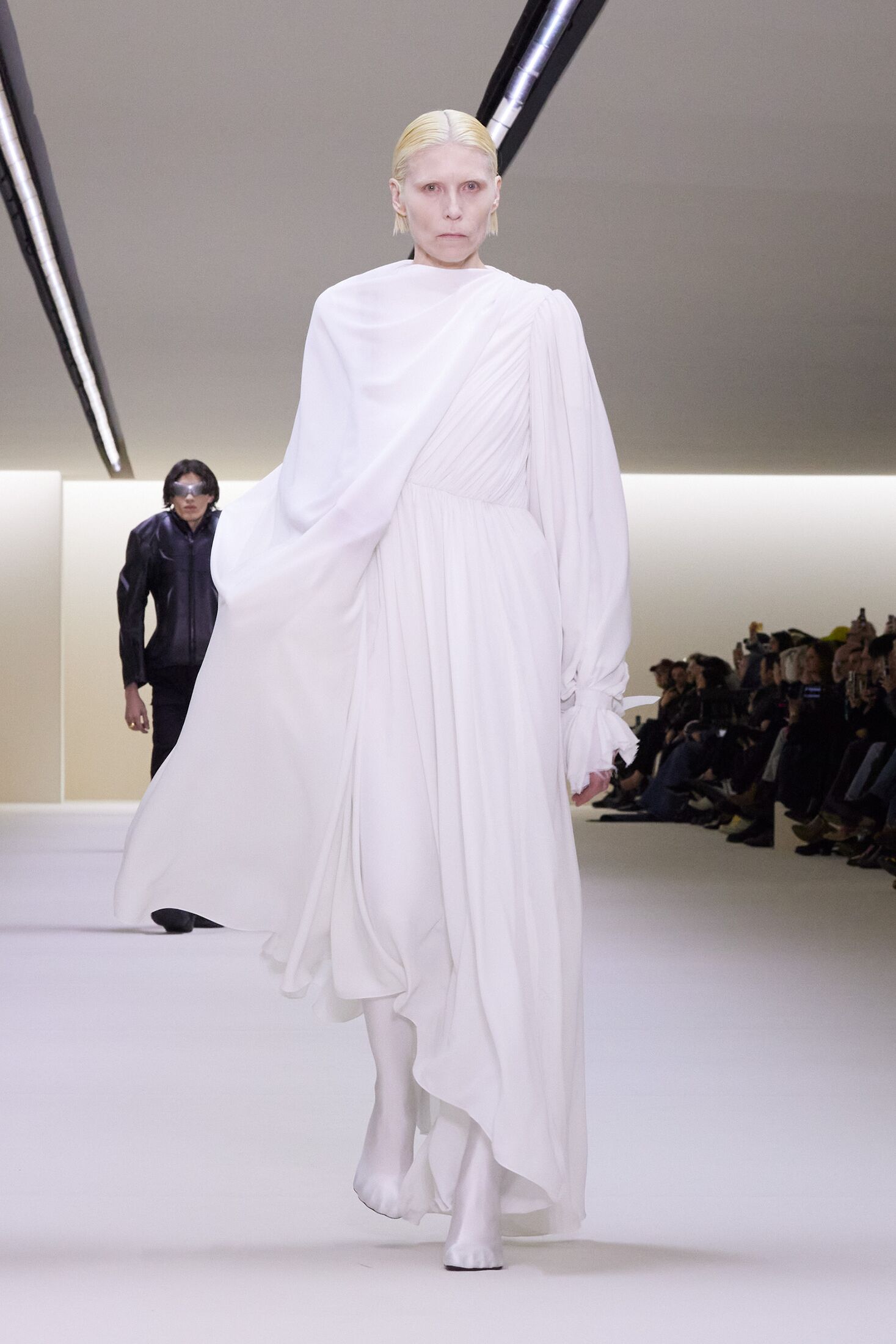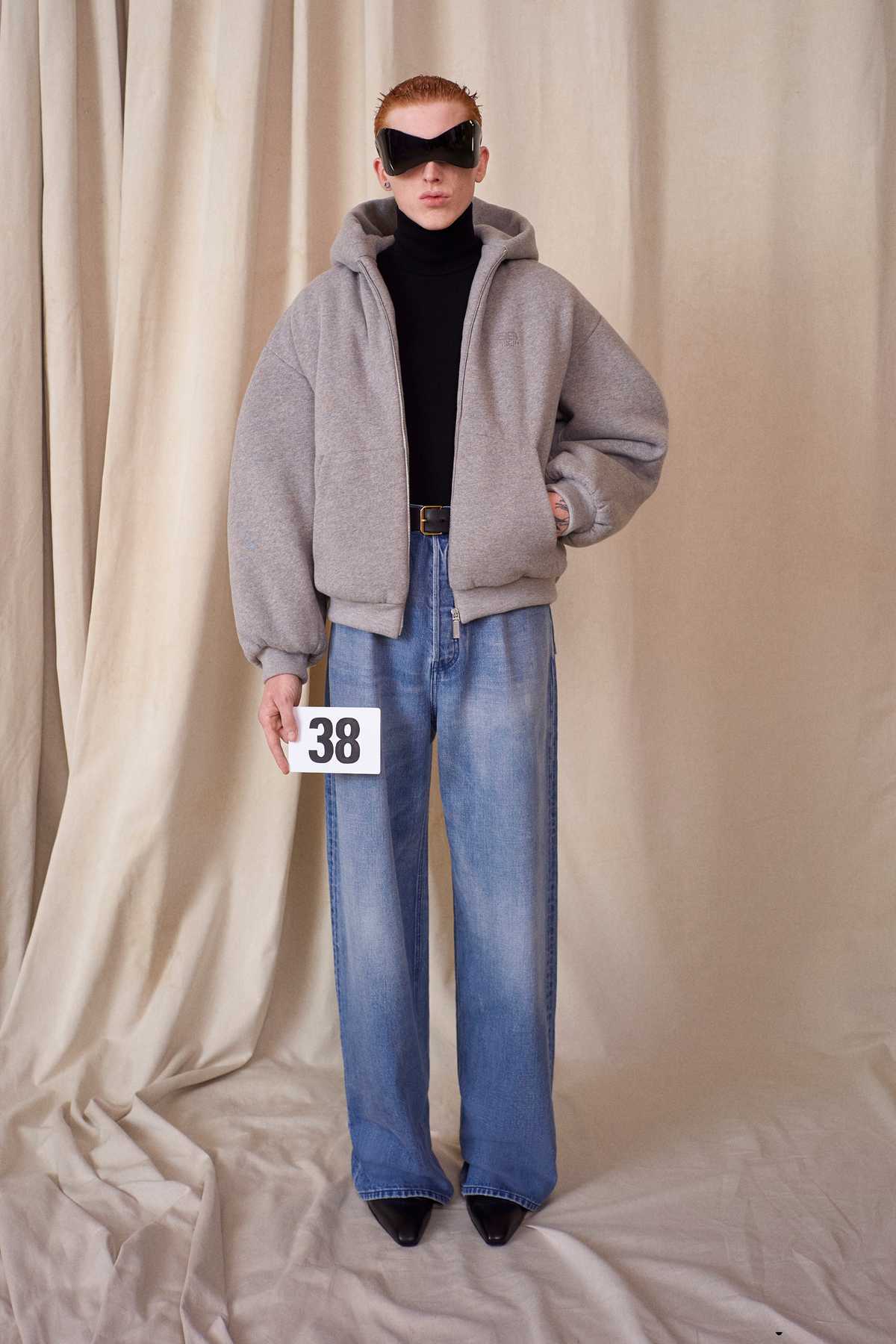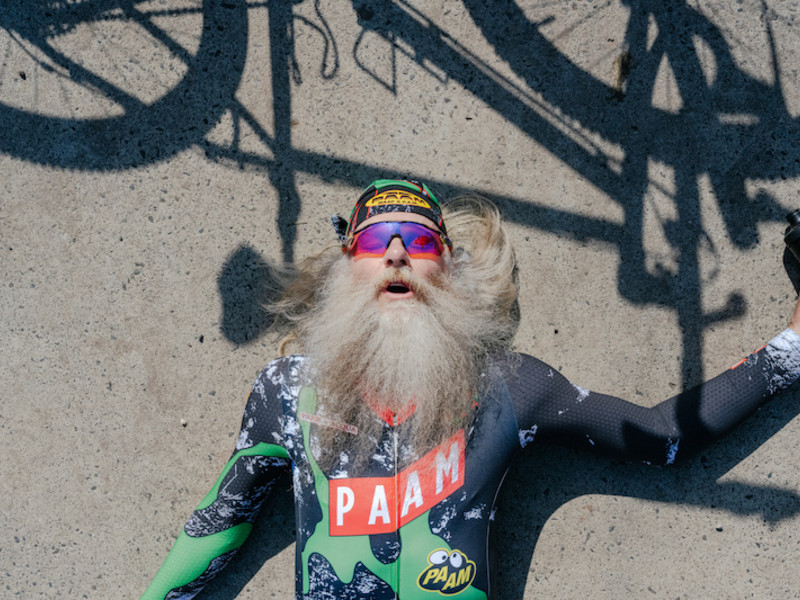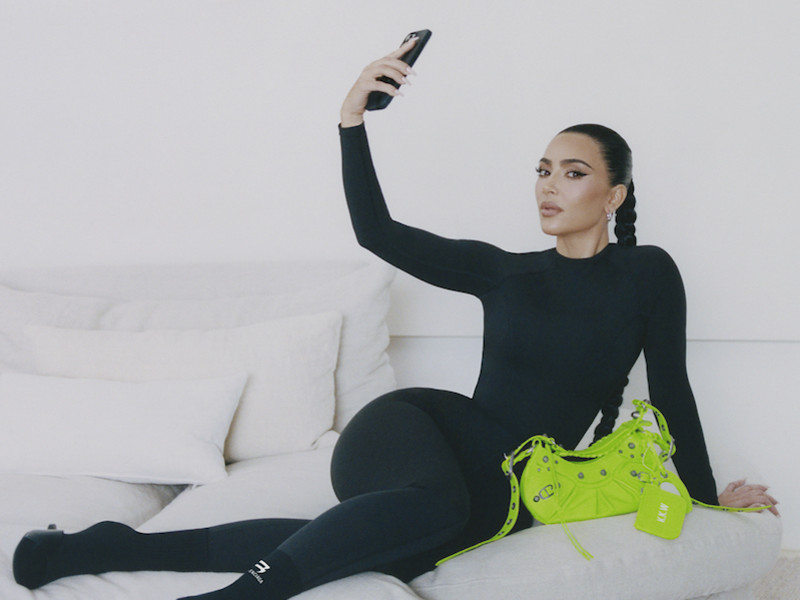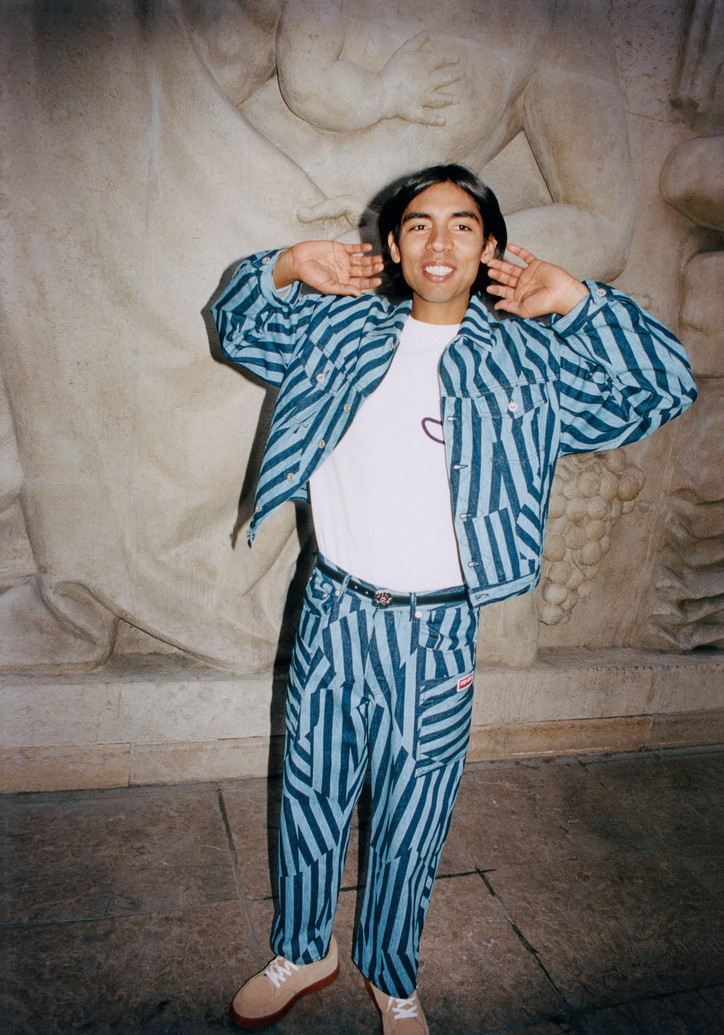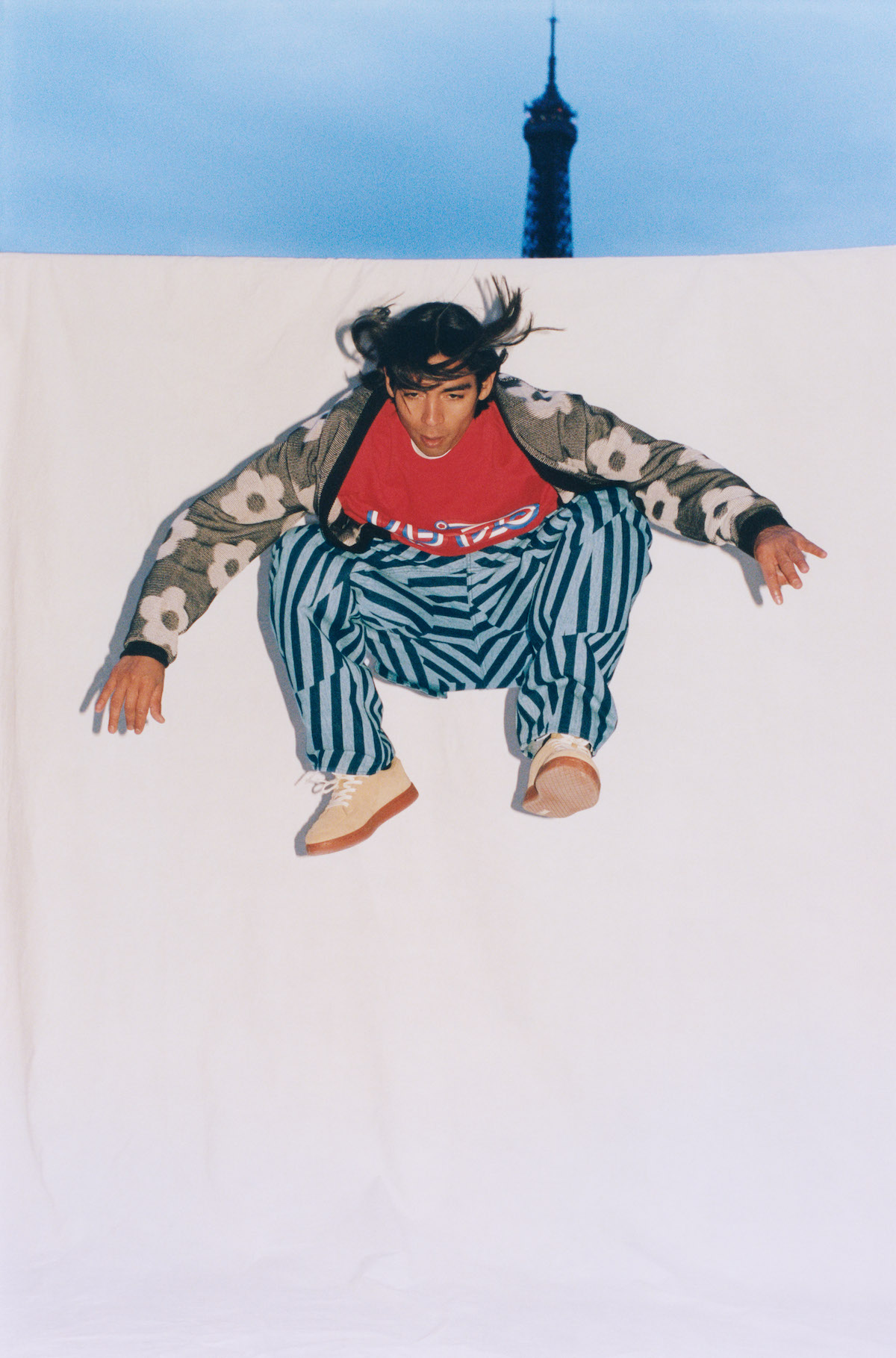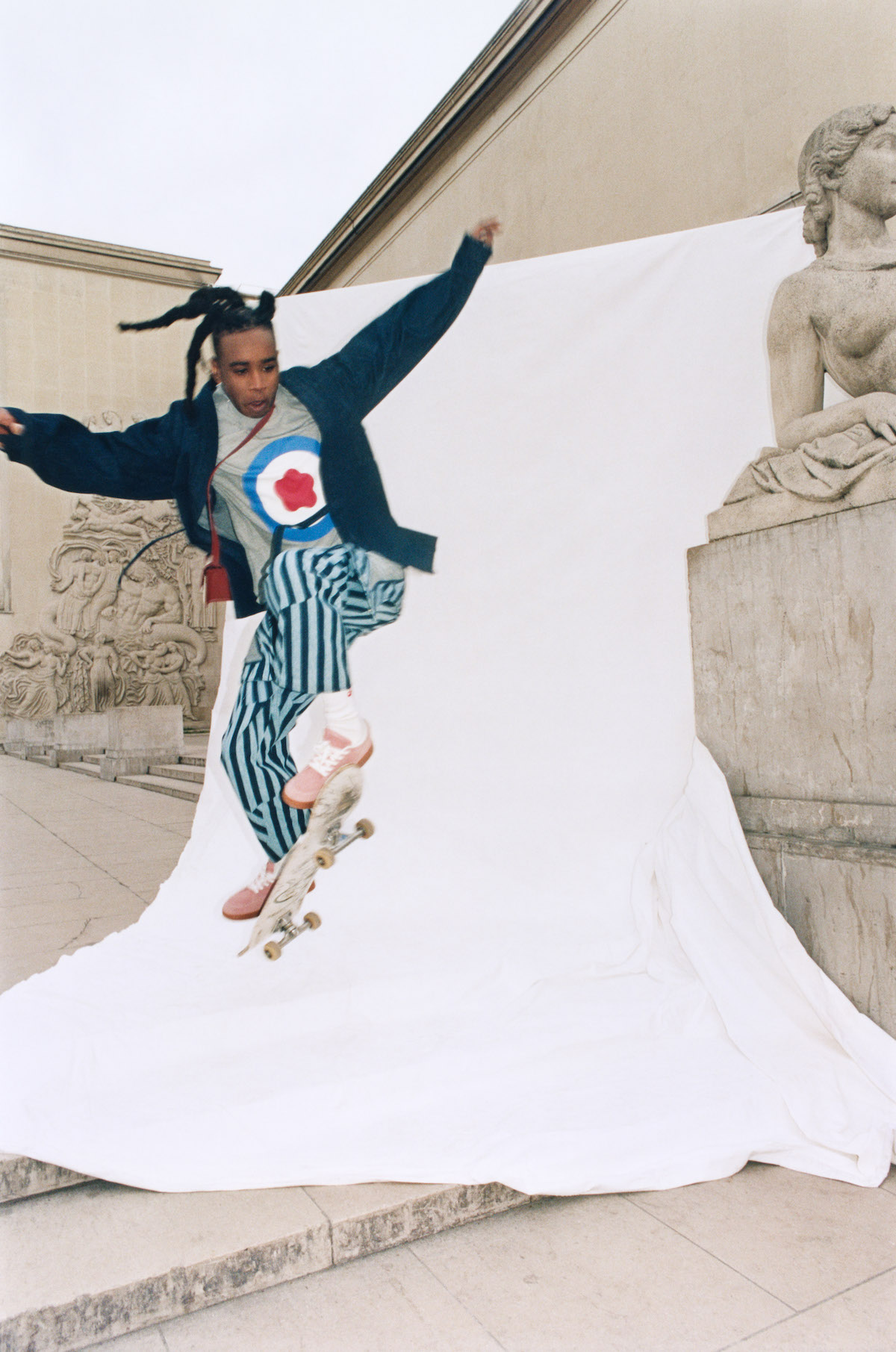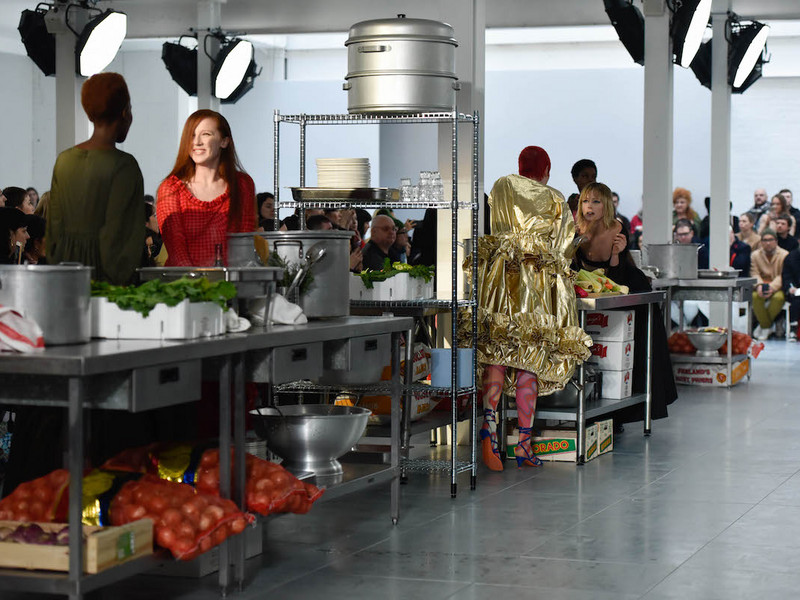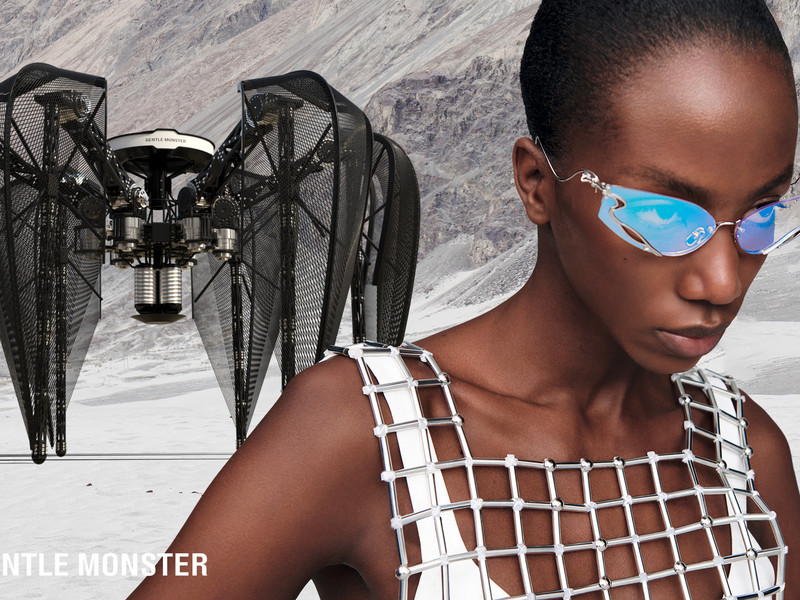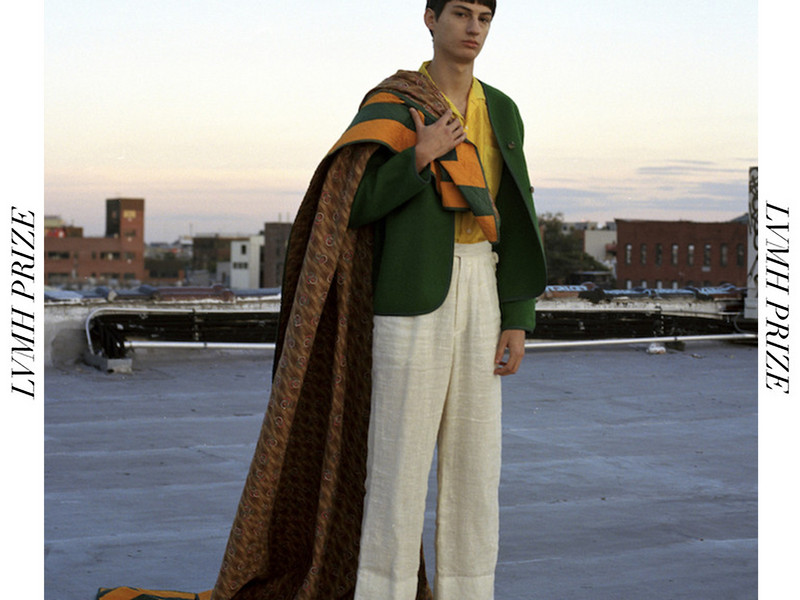So I was working really hard to try and just kind of put down my ideas as best as I could with as little as I had. So the process was very much organic—draping, cutting flat—but nothing particularly… I was a bit limited back then. So it was kind of just with the opportunity to do the best I could. But that obviously evolved as I progressed, I was trying to save a lot of money as I was working. So I would invest in like, I think gutters or invest in interns and stuff like that.
Women figures, such as SZA, Rosalia, and Solange, have been seen in your designs. Did Wesley Harriott inform your direction at SRVC?
It's interesting, just to highlight that point, those women that have worn my previous works, they're all women that I would consider muses and all women that I truly deeply admire. So when I even designed those clothes, they're always in my head to begin with. So I find it quite a beautiful thing that organically those women found the brand that I always really loved. It wasn't through me like trying or chasing it kind of organically happened. And I think as they found the brand, I started to have other women naturally start to find the work.
I took a little time out from with the Harriet and I was working at Vetements as a designer. And that was a really great experience. I was really proud to join that team because it was a brand that I really respected and loved. And then when I came back to London, I was presented with an opportunity to start a new brand which became SRVC. So SRVC came through natural career progression. And what SRVC allowed was for me to kind of really push forward an agenda that both me and the SRVC team believe in, which is addressing modern women's wear for women at different stages and places in their lives. So SRVC came very naturally and it feels like what I've been working on and what I've been developing and kind of trying to hone as a designer. SRVC is really an amalgamation of all of those experiences.
What makes SRVC self-stylable?
So with SRVC, the team is predominantly women. And as a man, I would never be so arrogant to not have incredible council of the women that I work with. So the intention of SRVC is always to, for example, a blazer a piece of tailoring. What can we do with a piece of tailoring that keeps it to its purpose, but amplifies it for a woman in today's world? How can we make that piece sustainable in her life, longer? How can we make that piece mean more to her longer? so we think about ways that you can sell style it. So that can be for example, a blazer may have a few incisions in the seams, which allows you to belt it at different points to create different silhouettes. The Blazers we did last season, they have removable shirt cuffs. So just for these little additions and modular details, it allows a woman in today's world to have a piece of clothing and make it work for her rather than her trying to feel like she's black clothes. So it's about creating steatosis between a wearer and garment. And I really enjoy presenting that as something to amplify the female experience in today's world.
